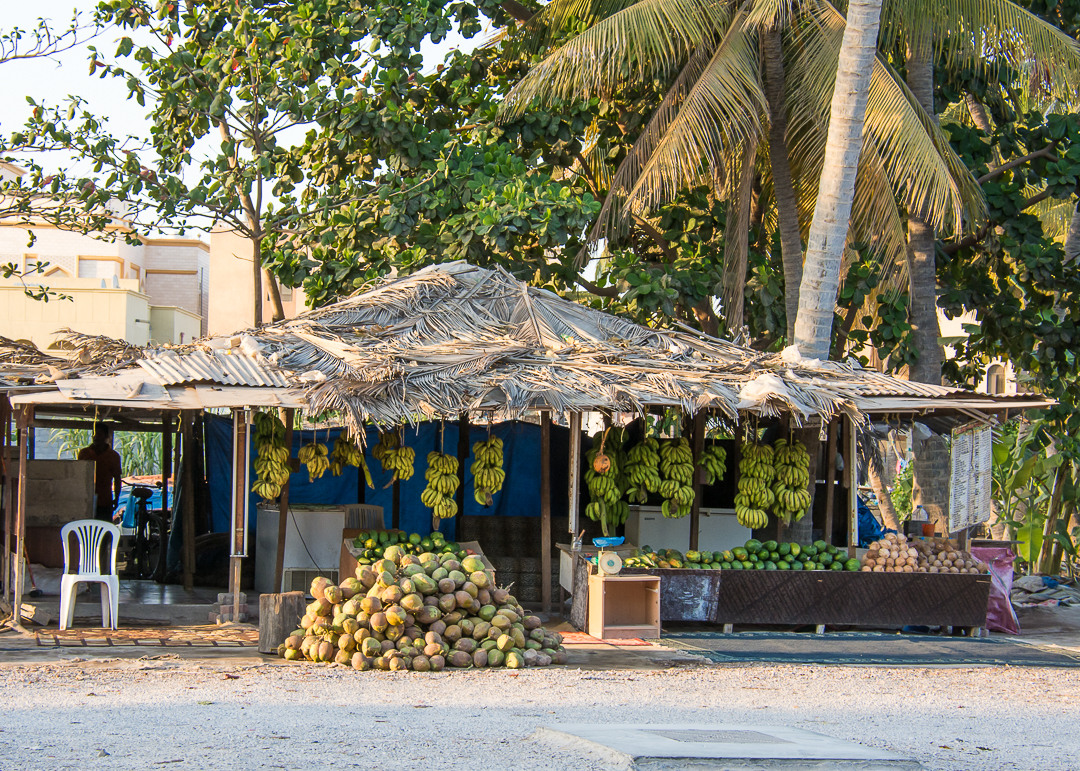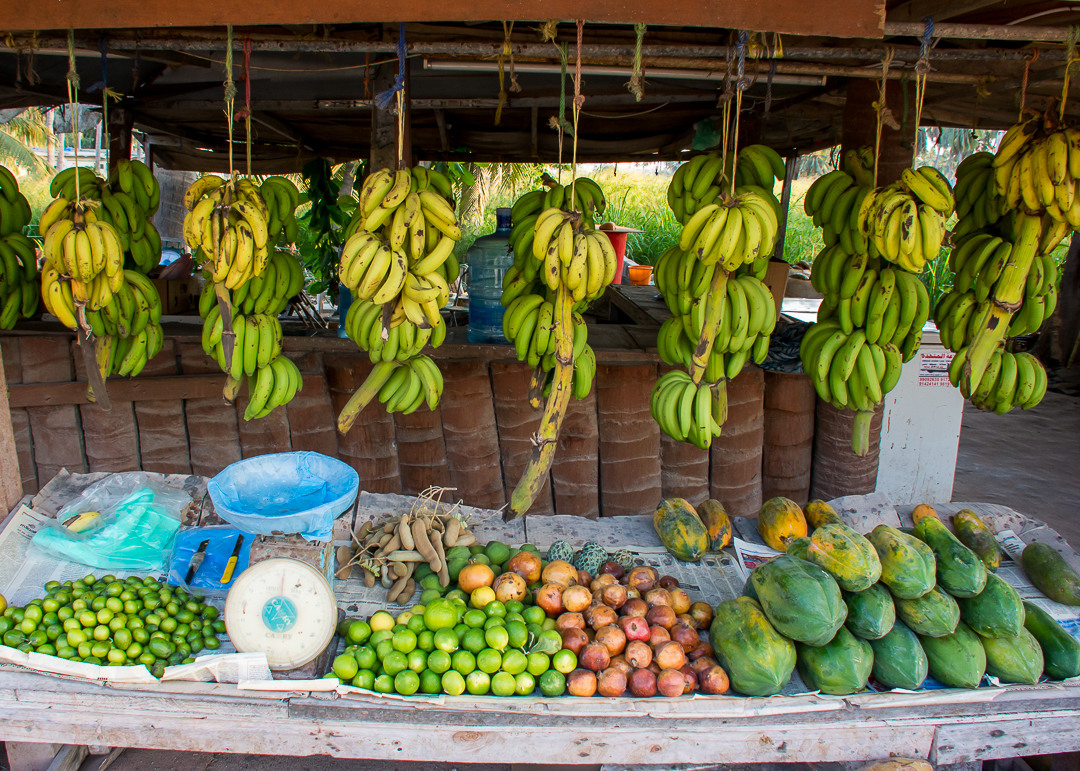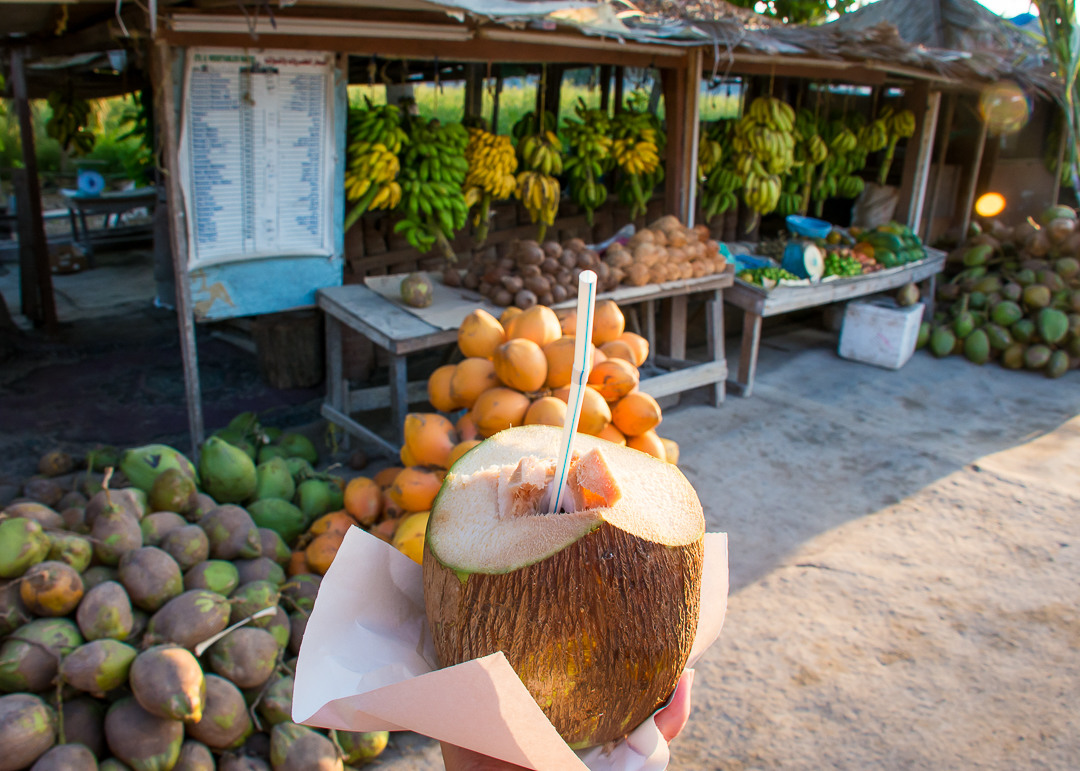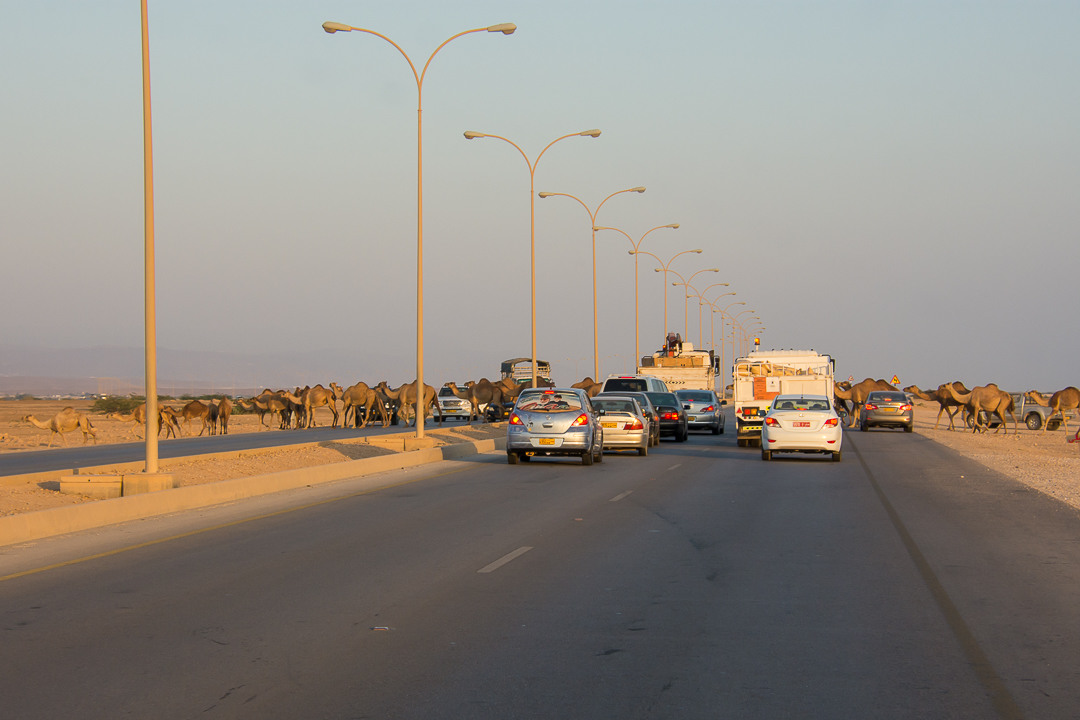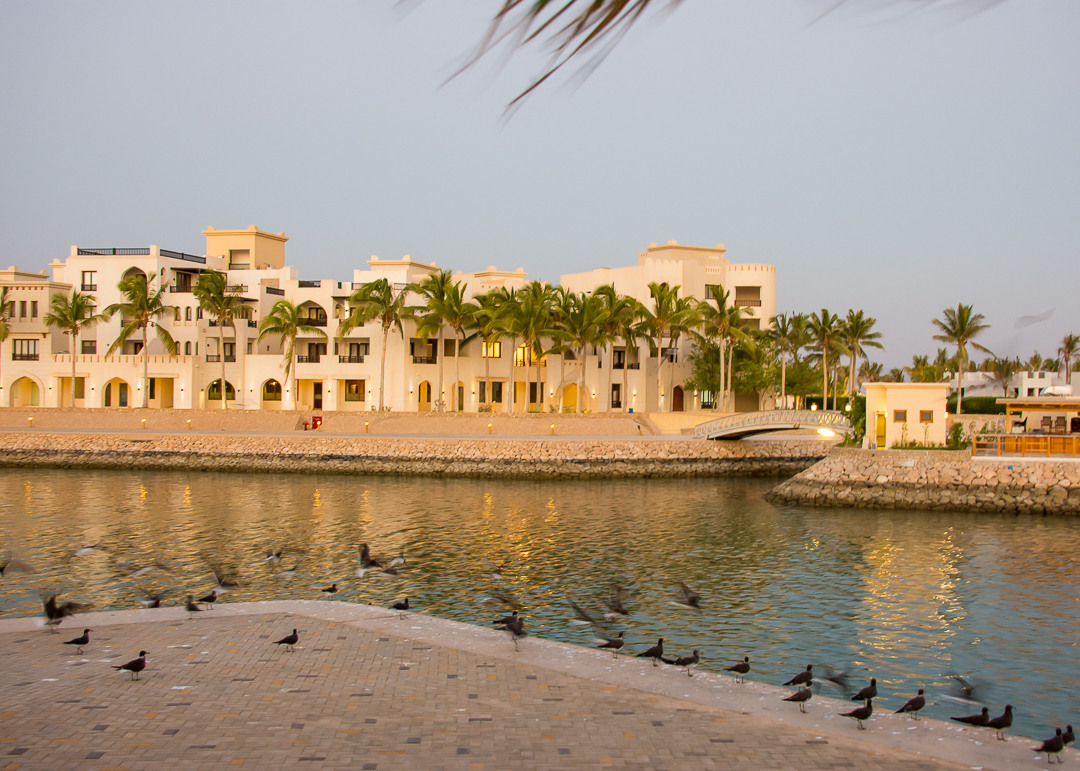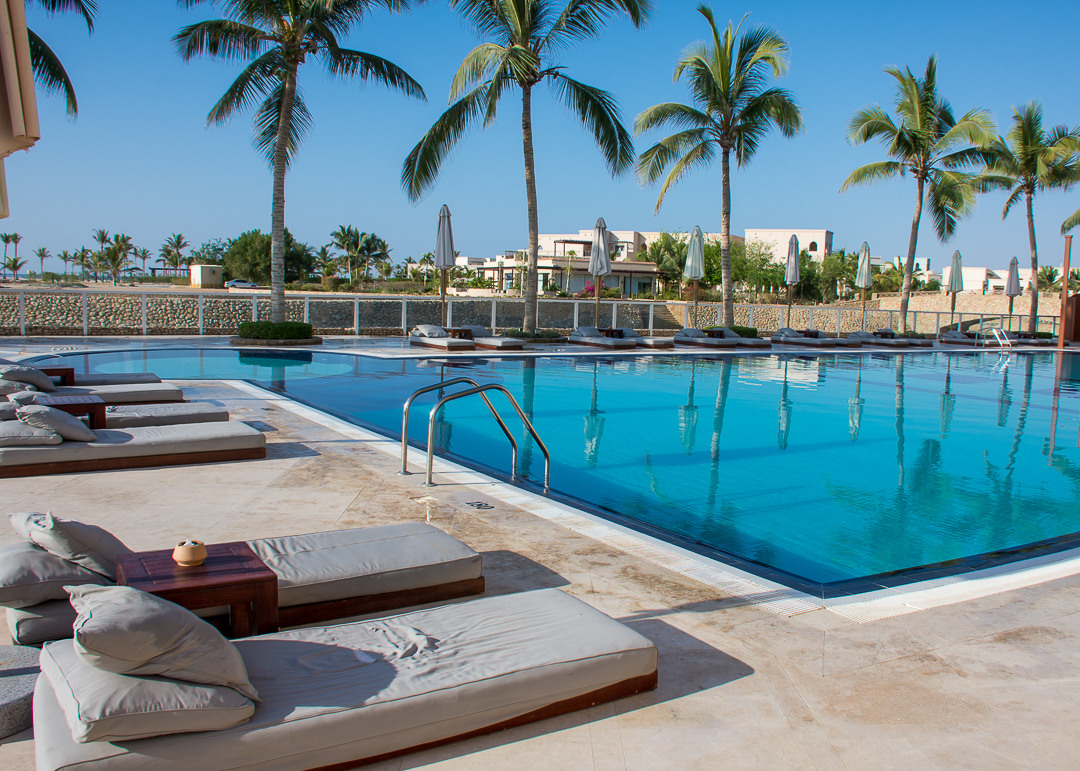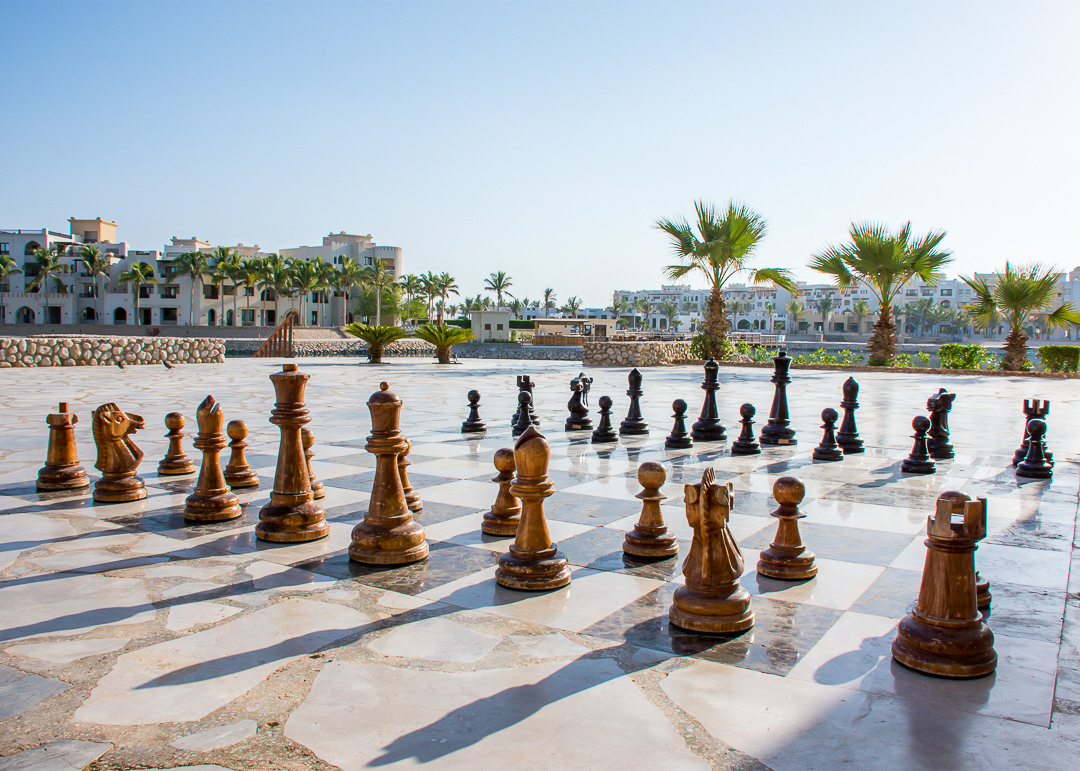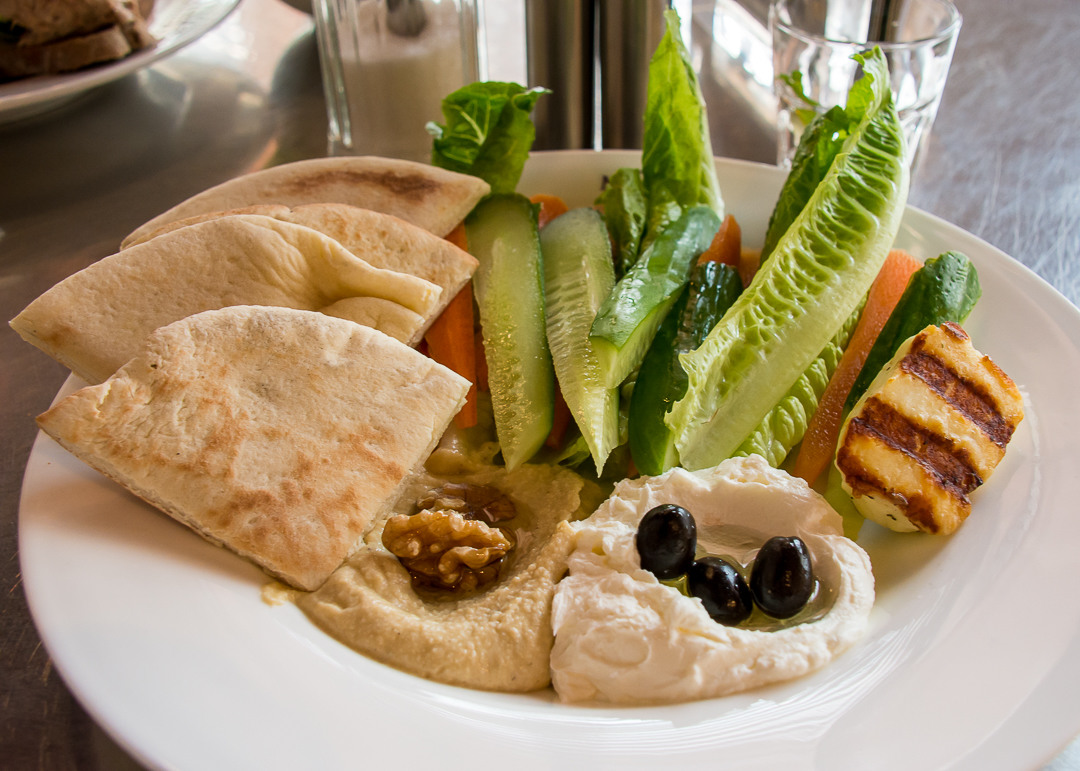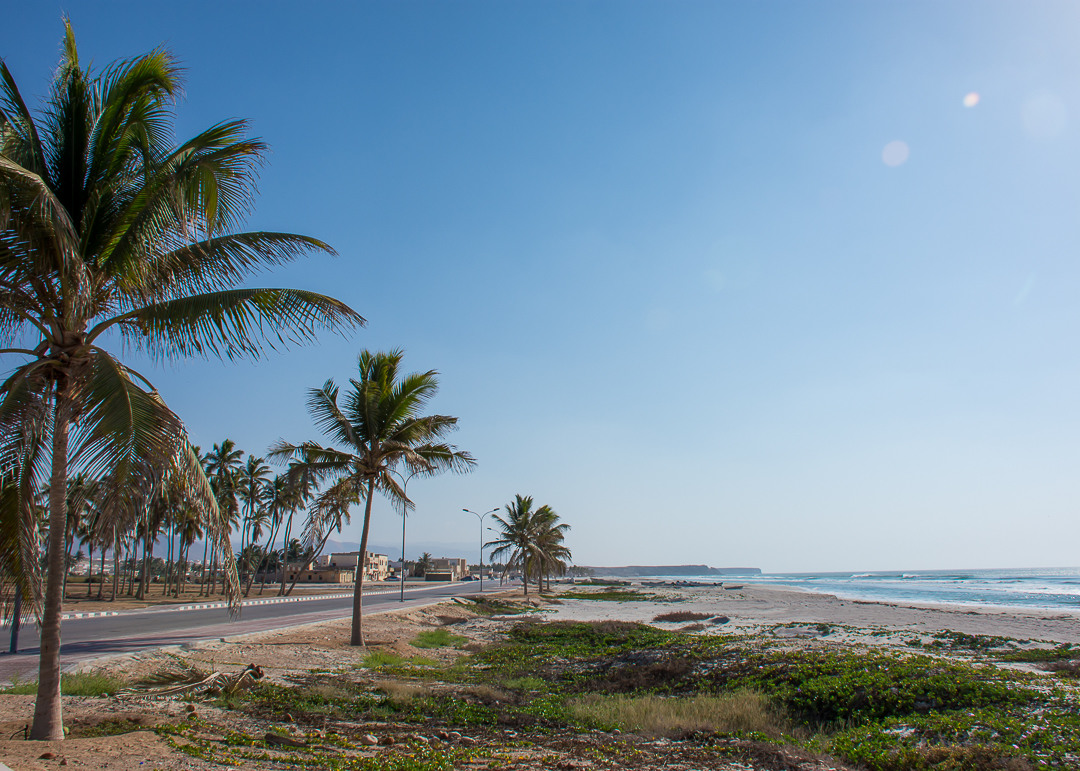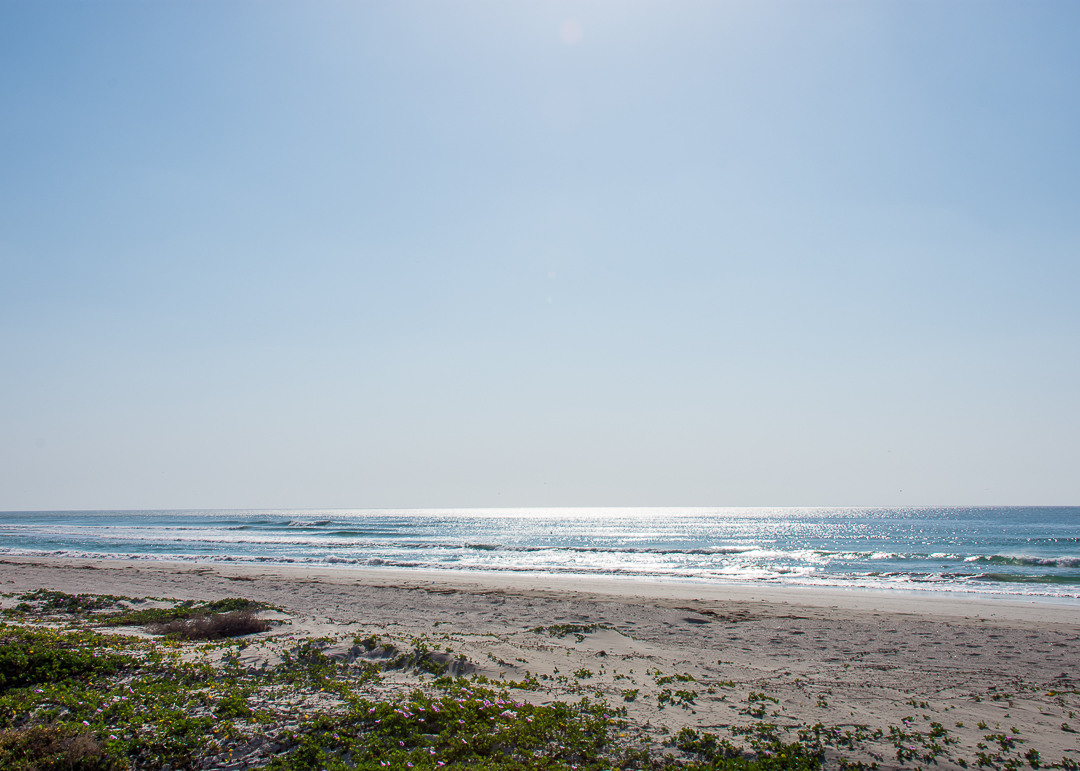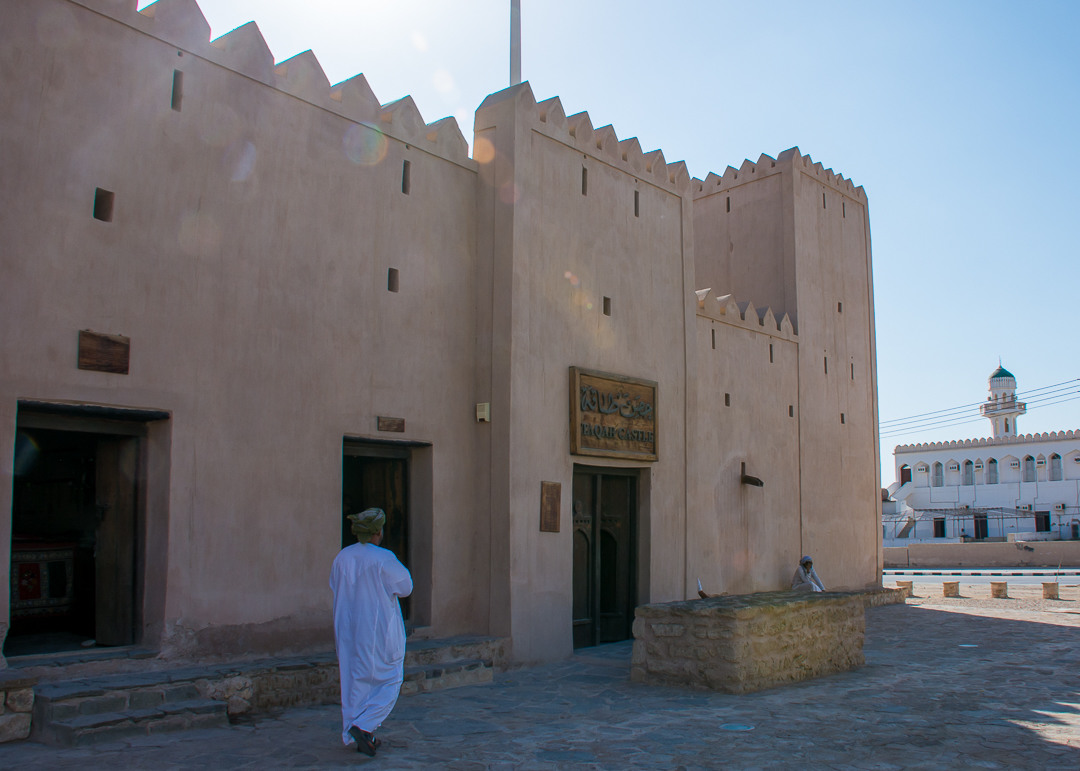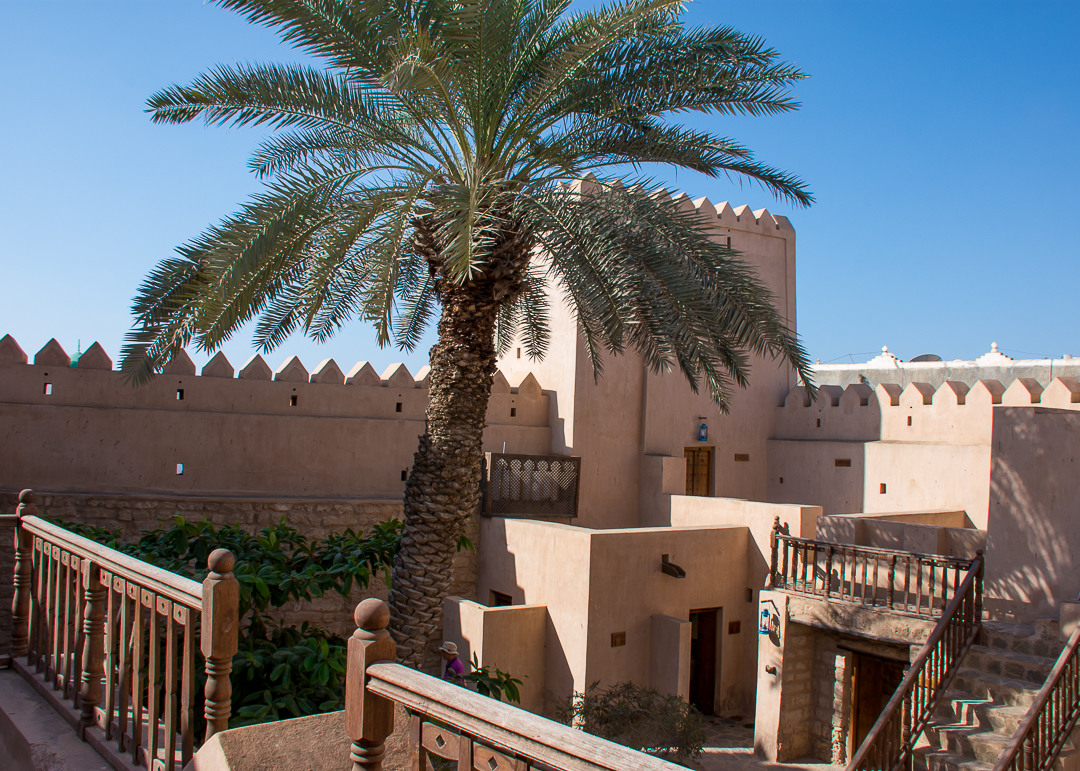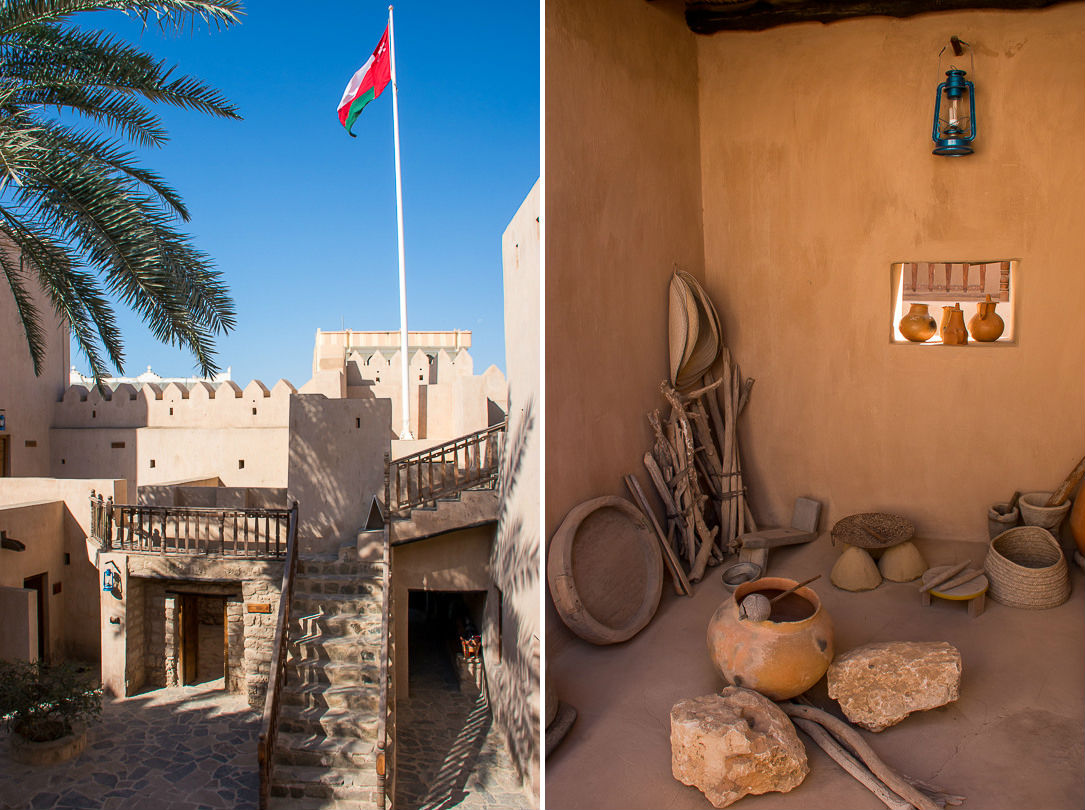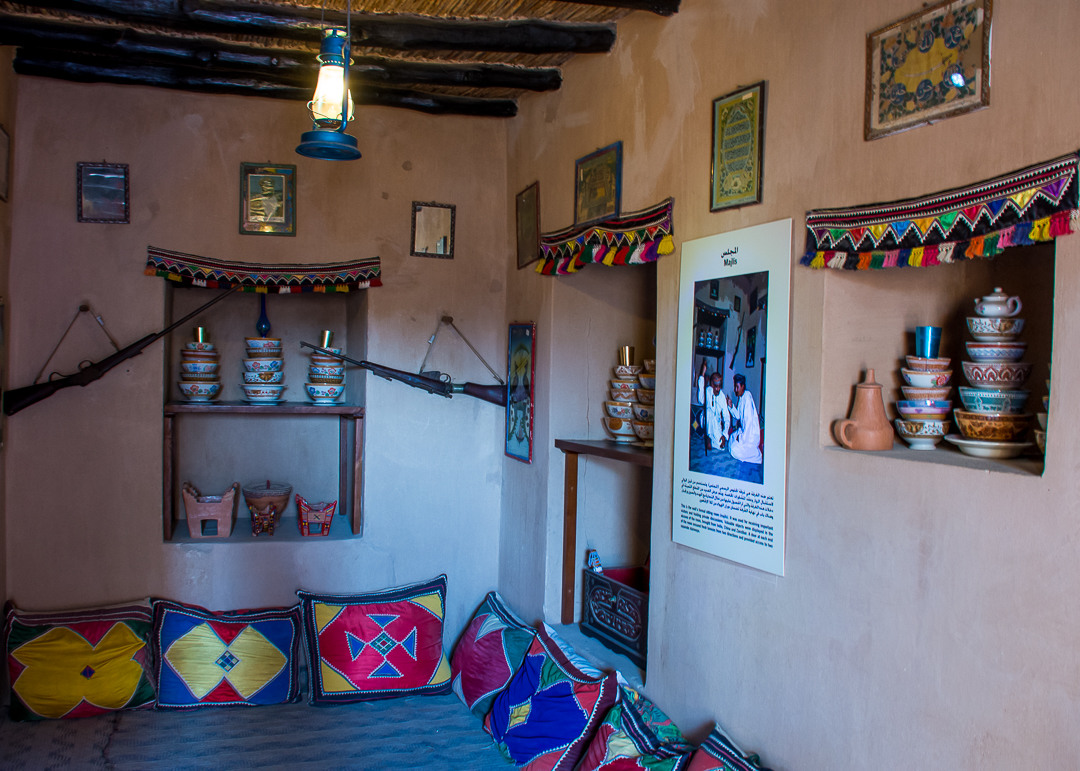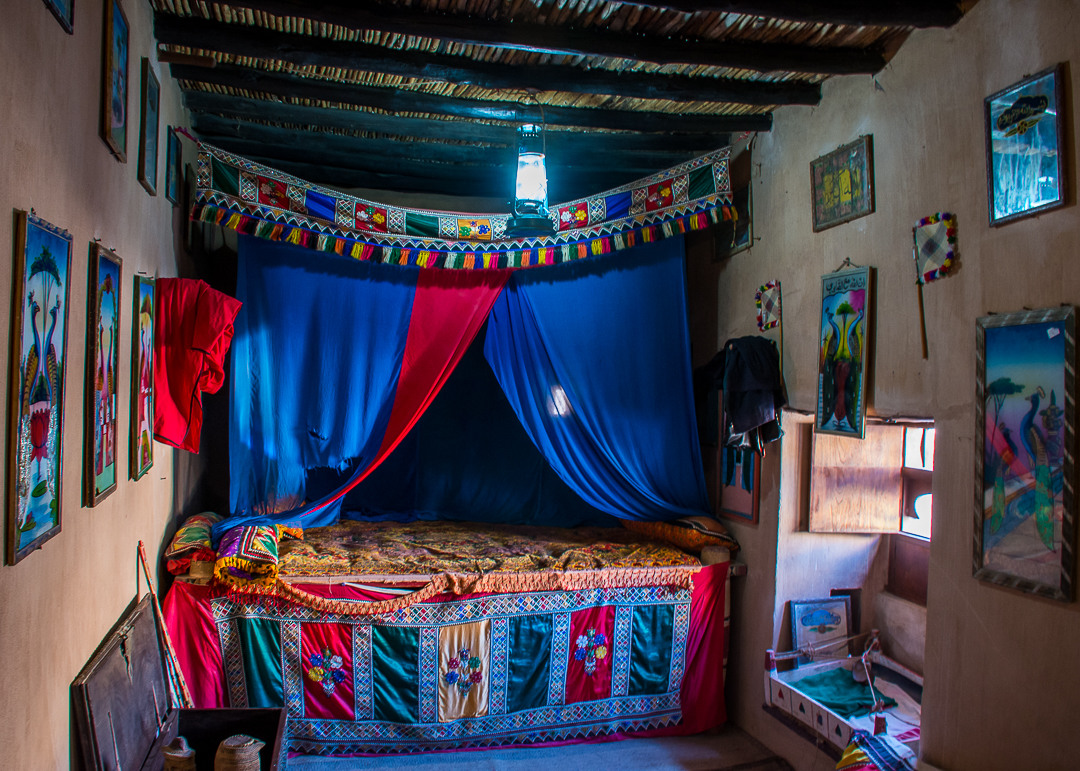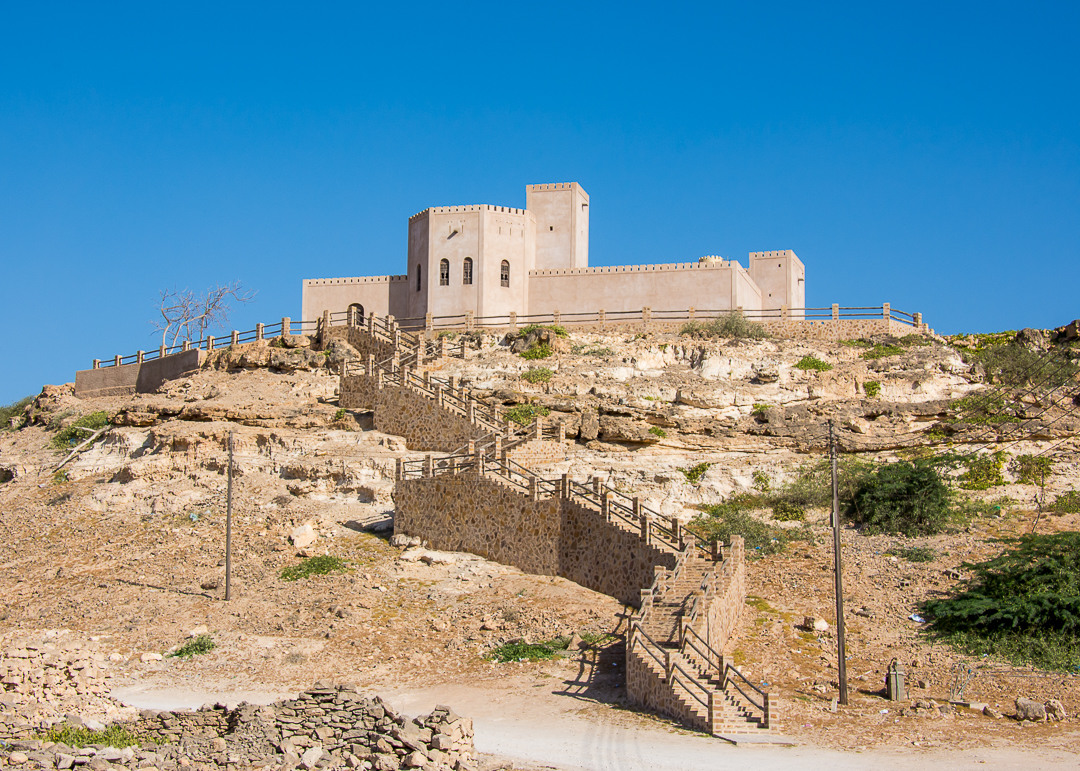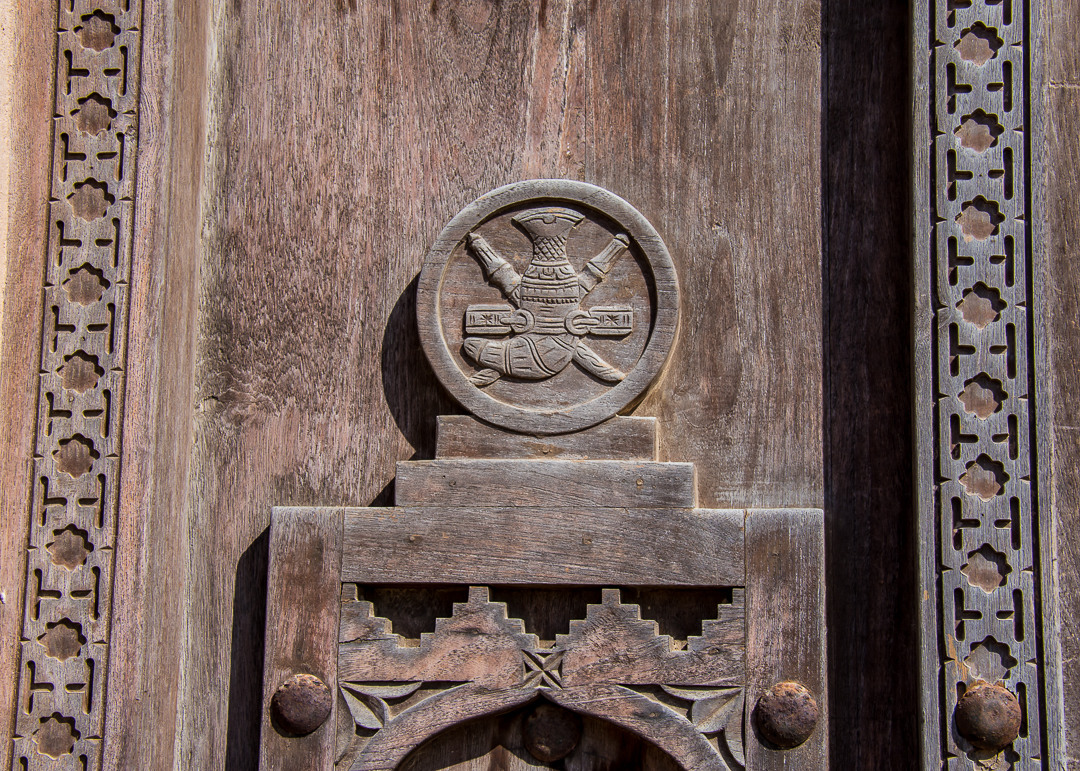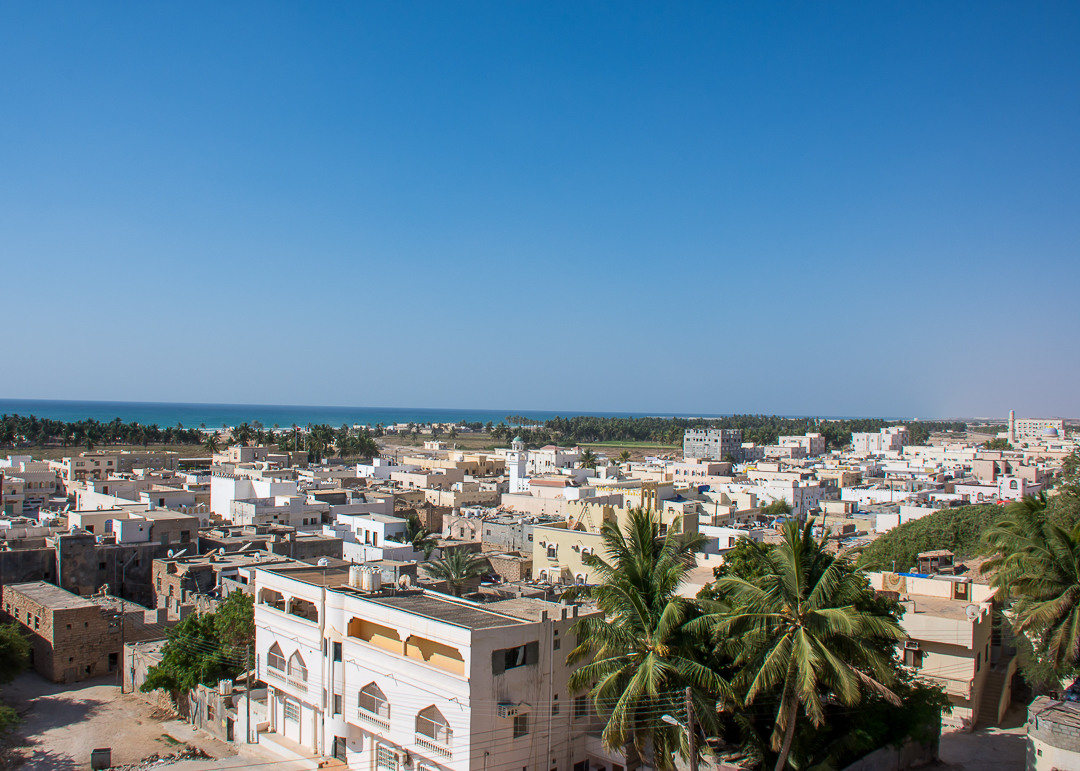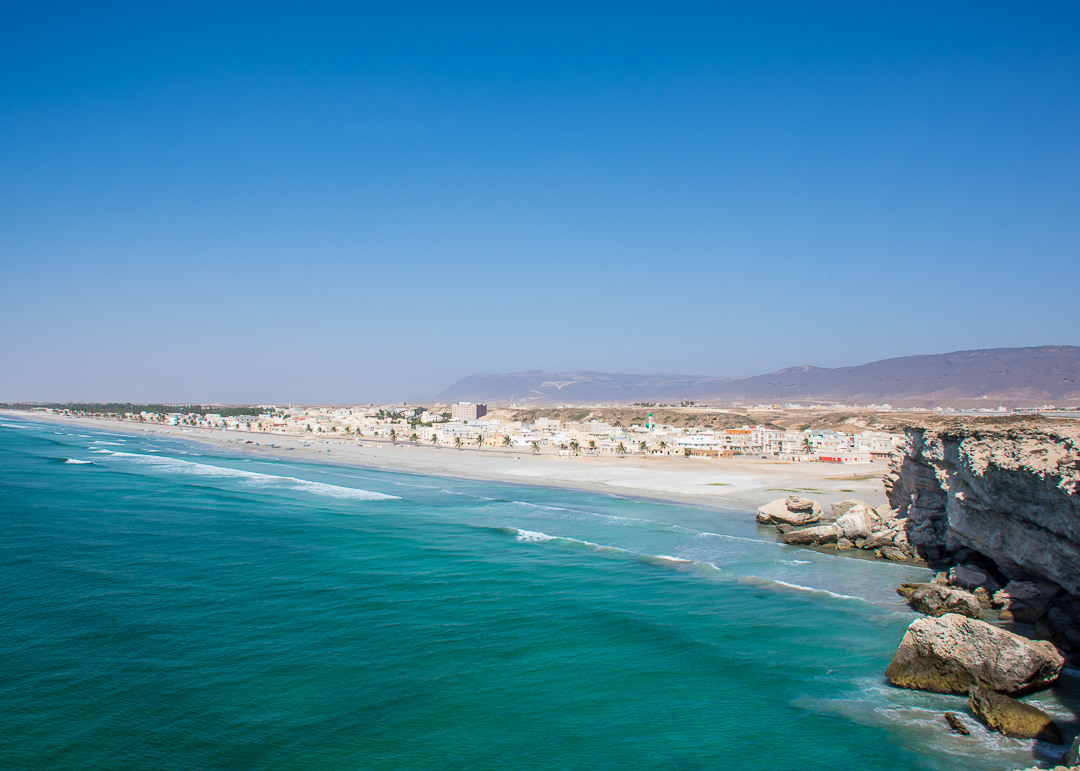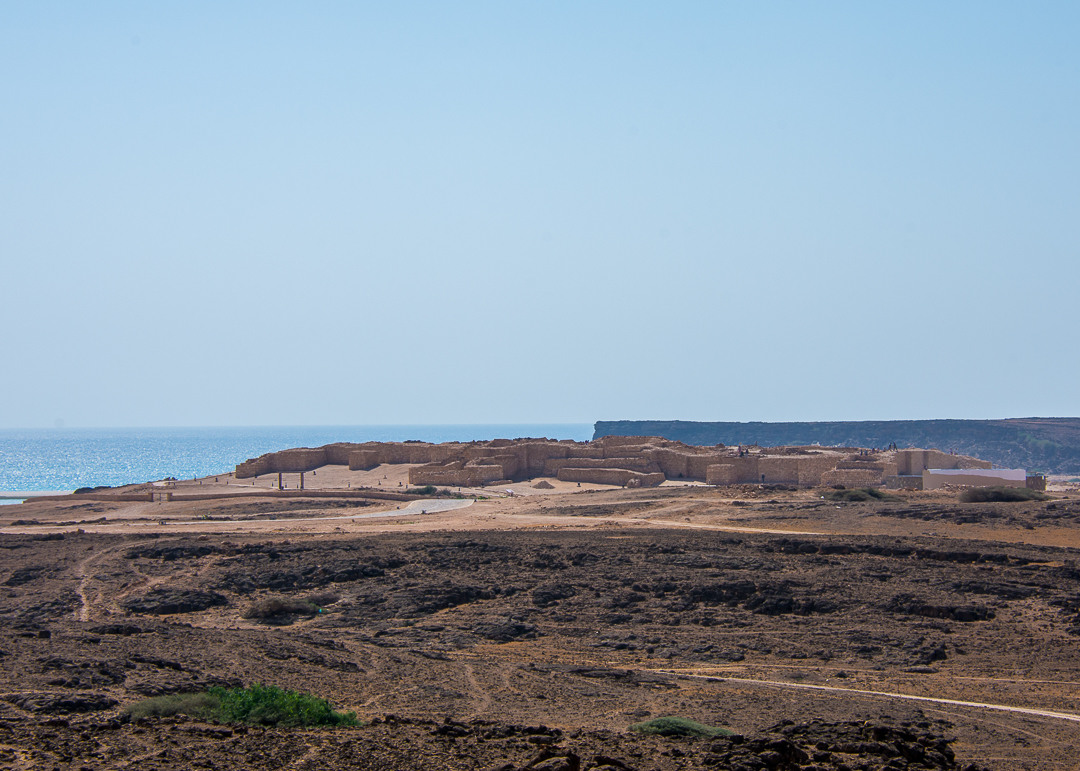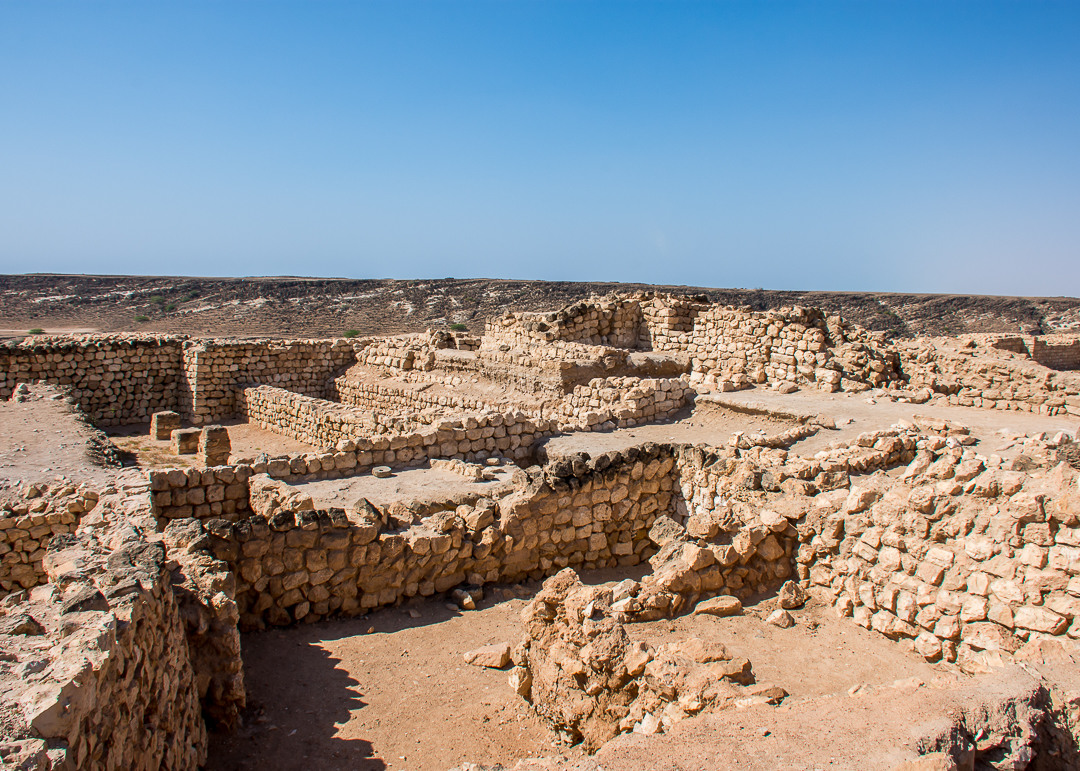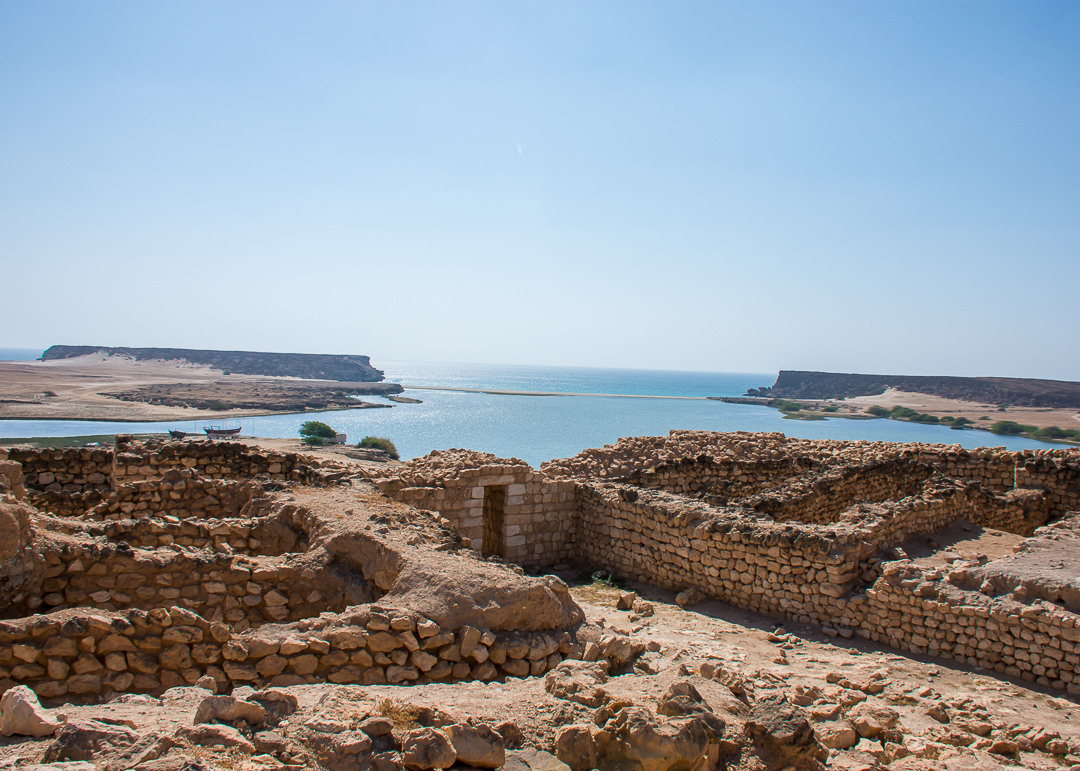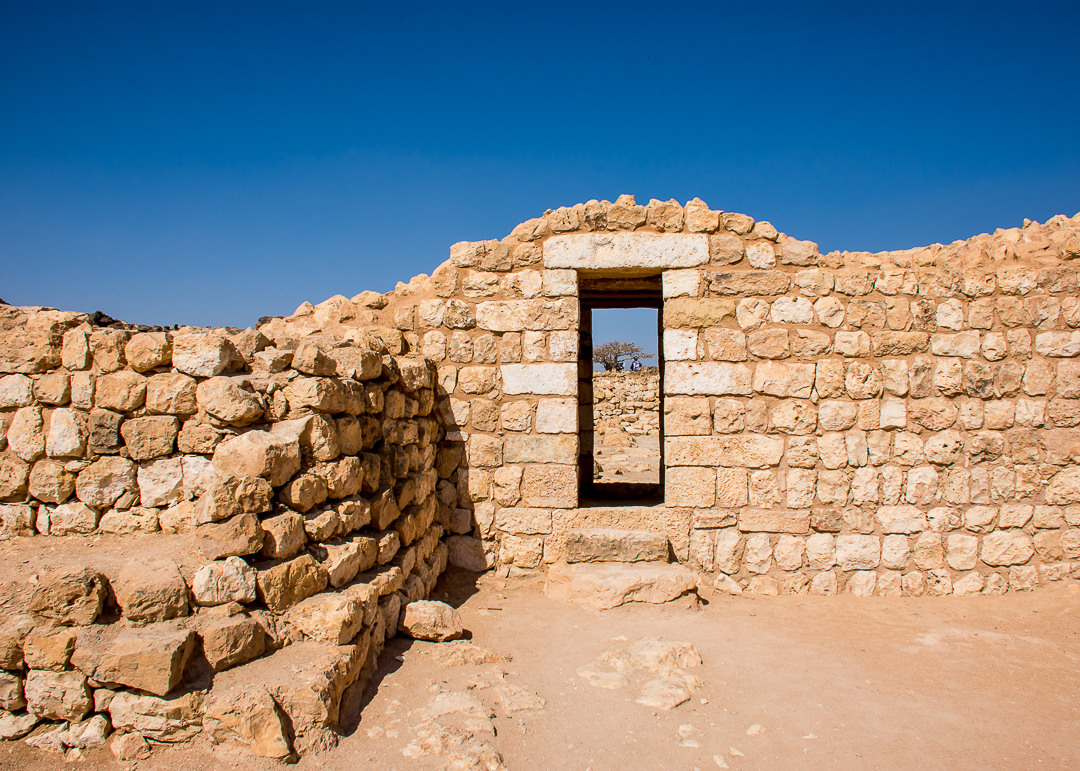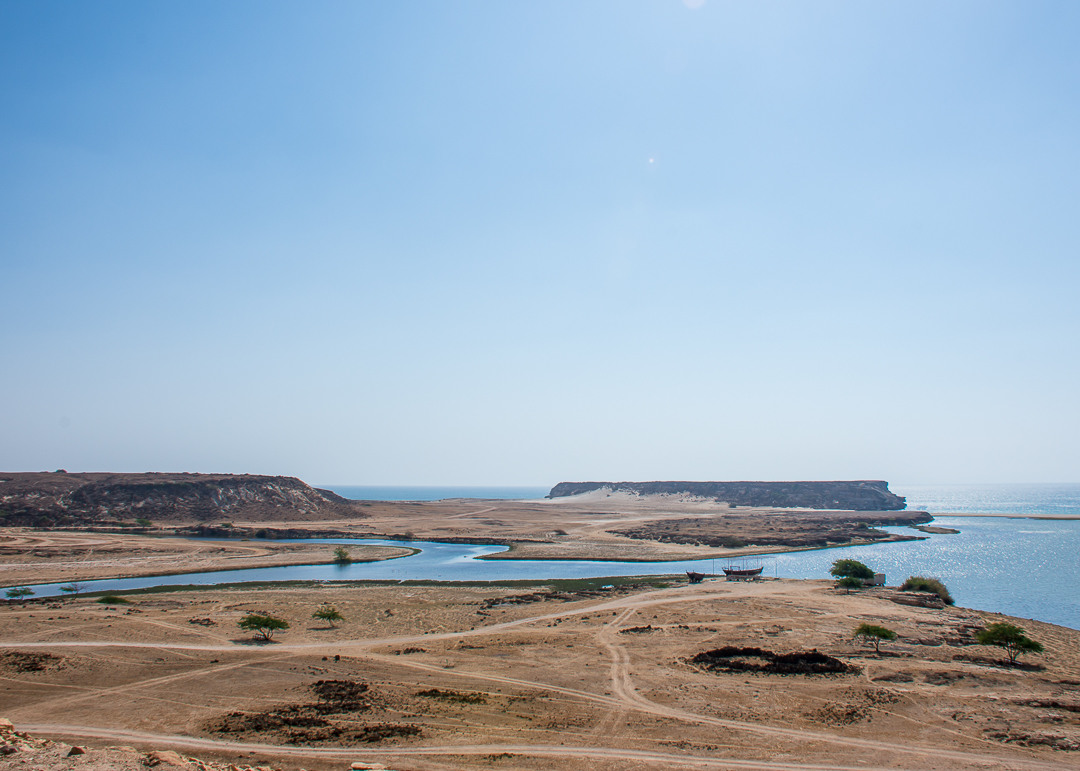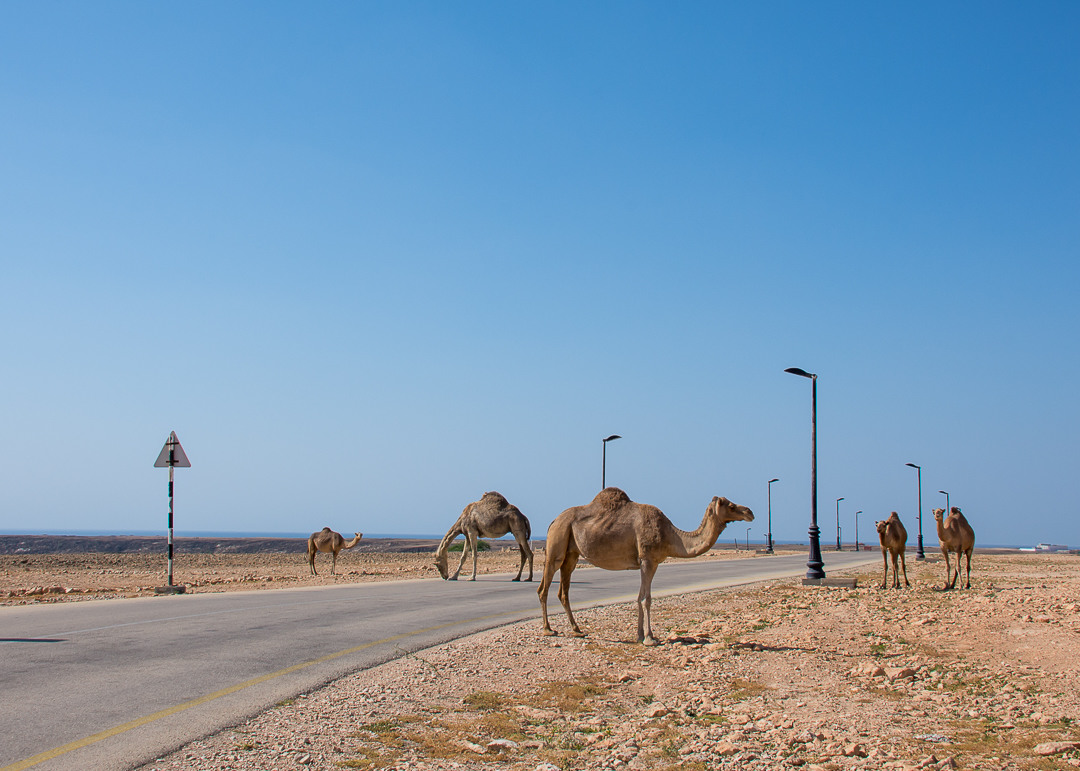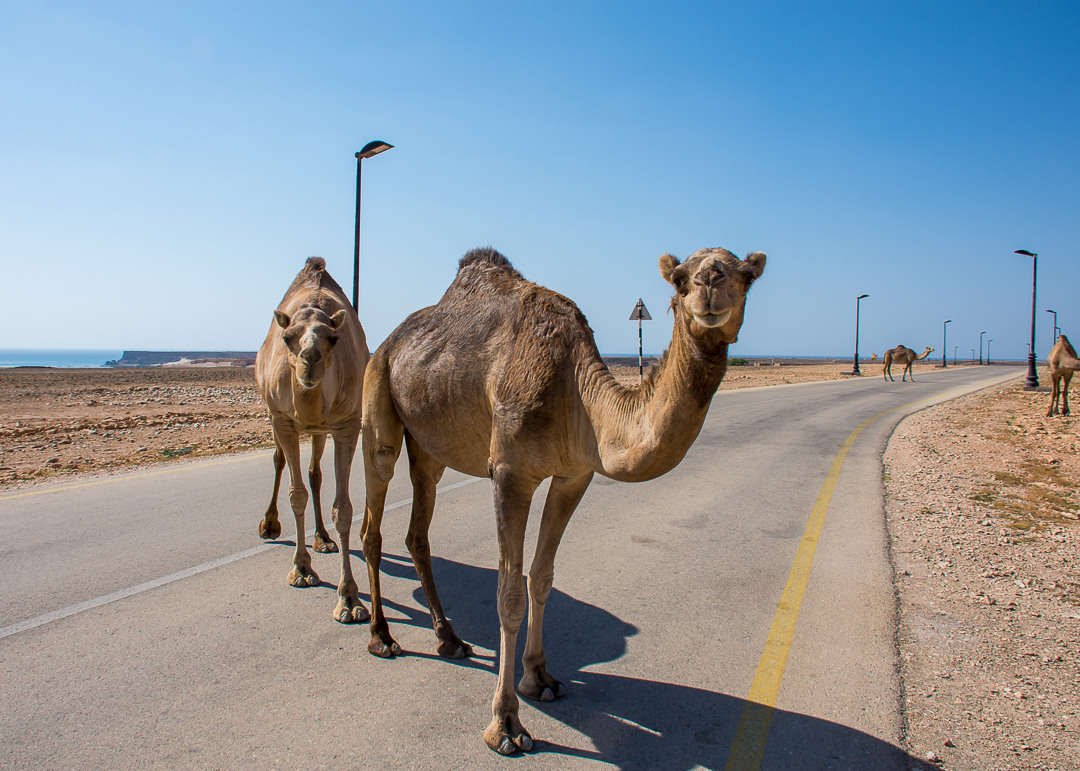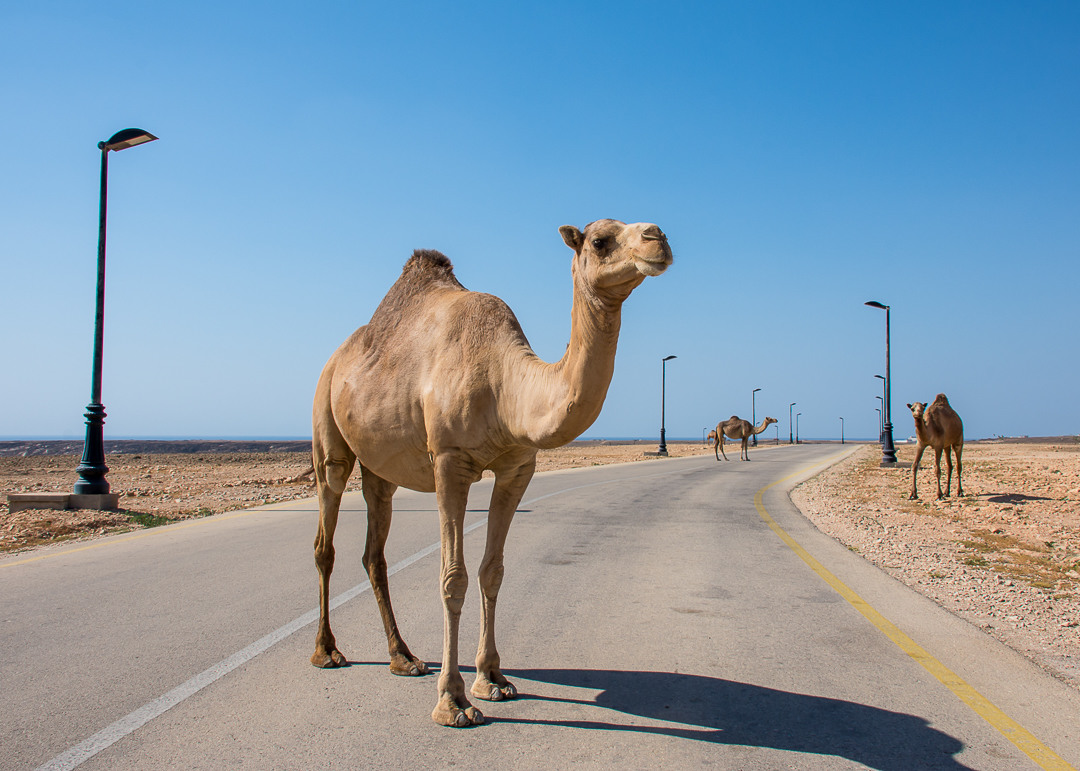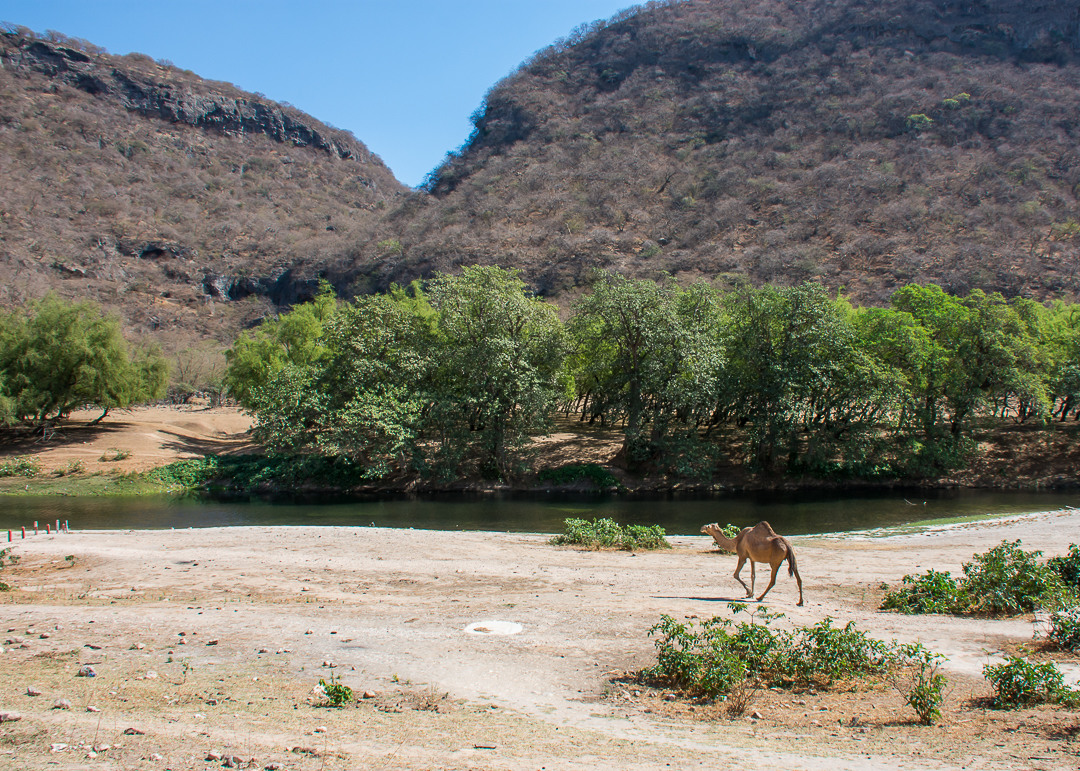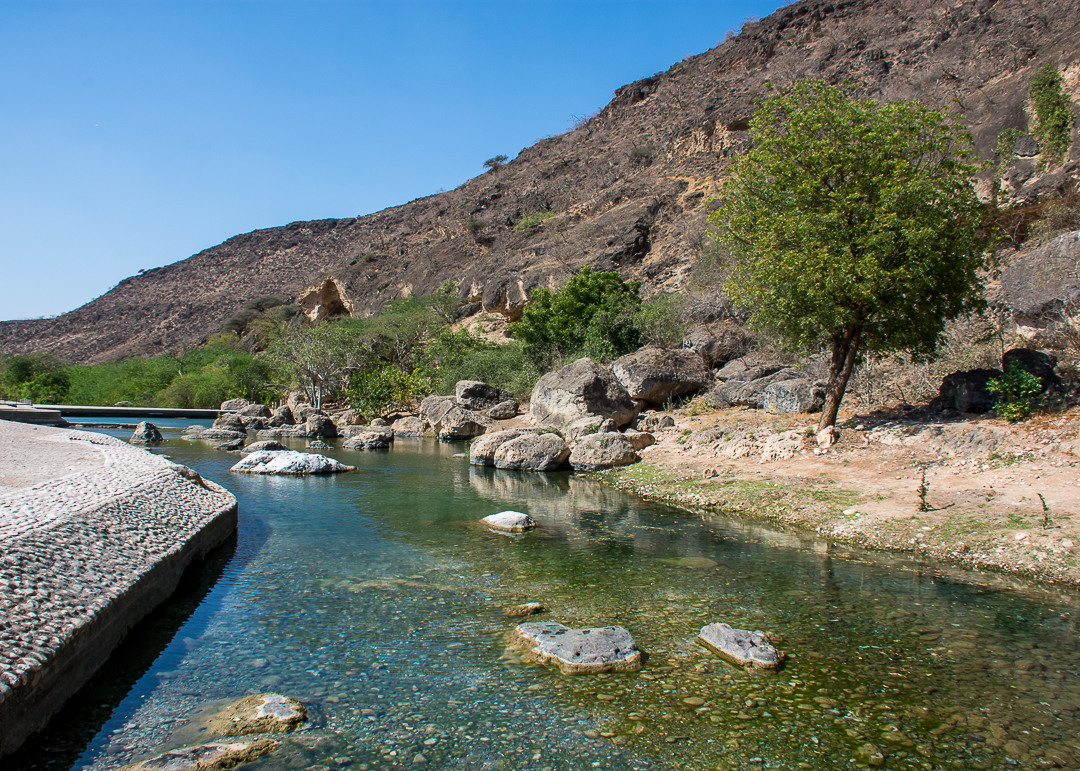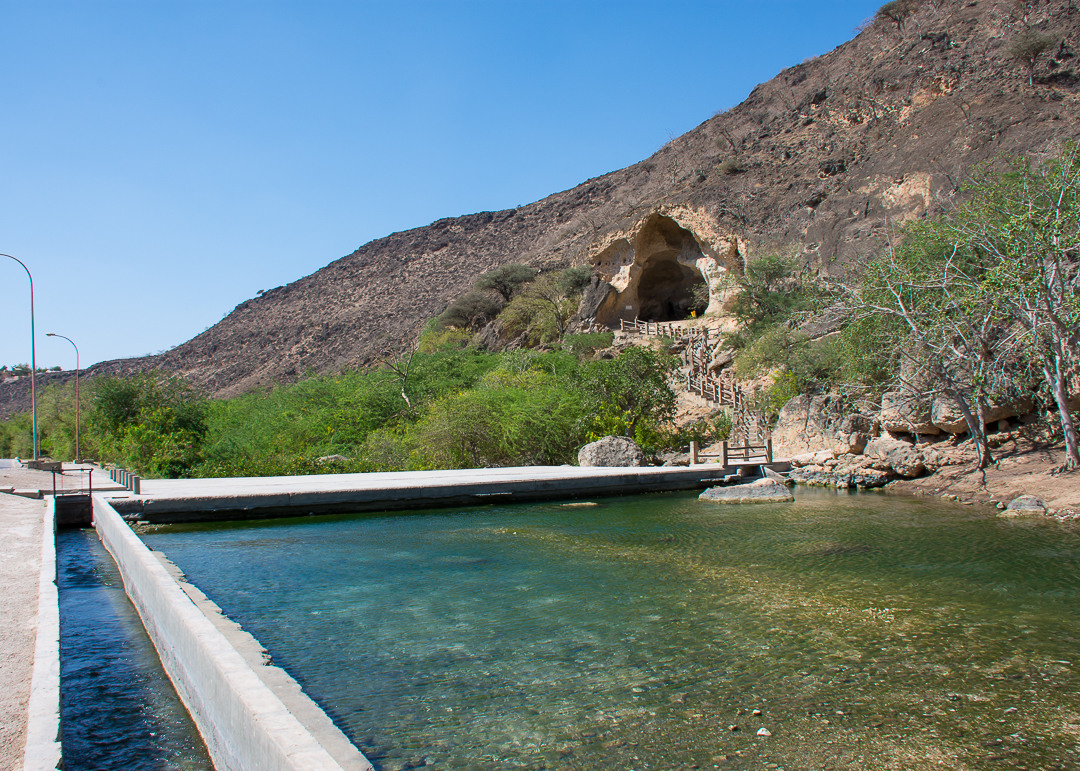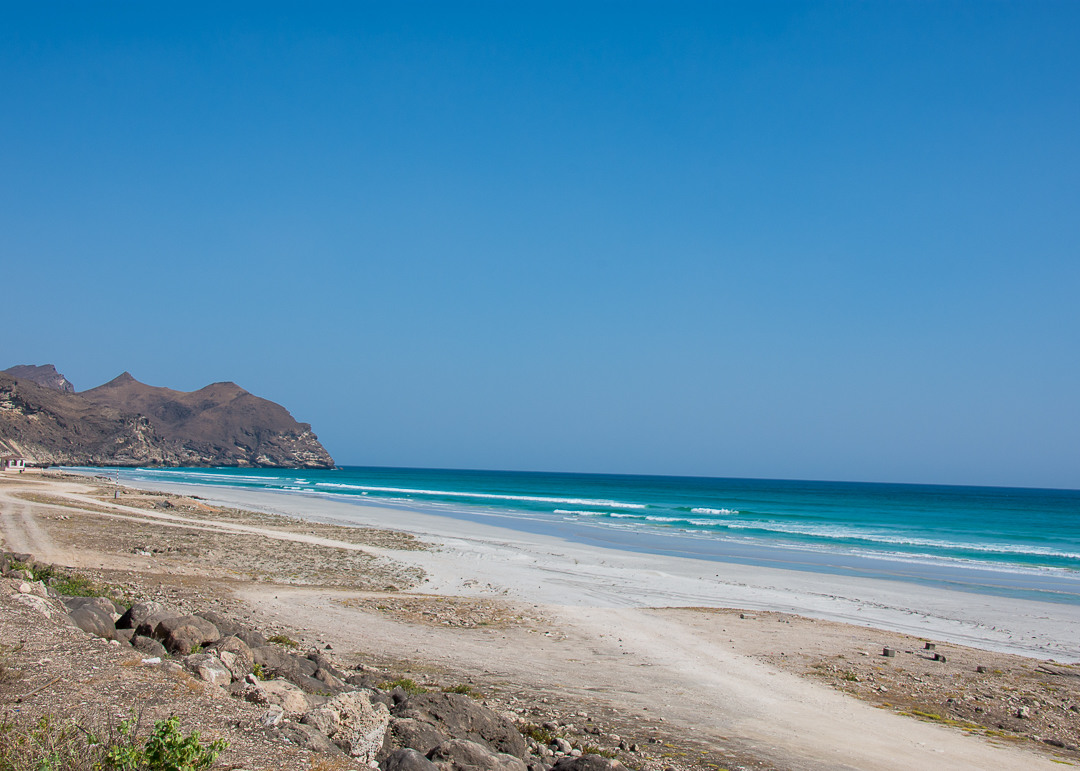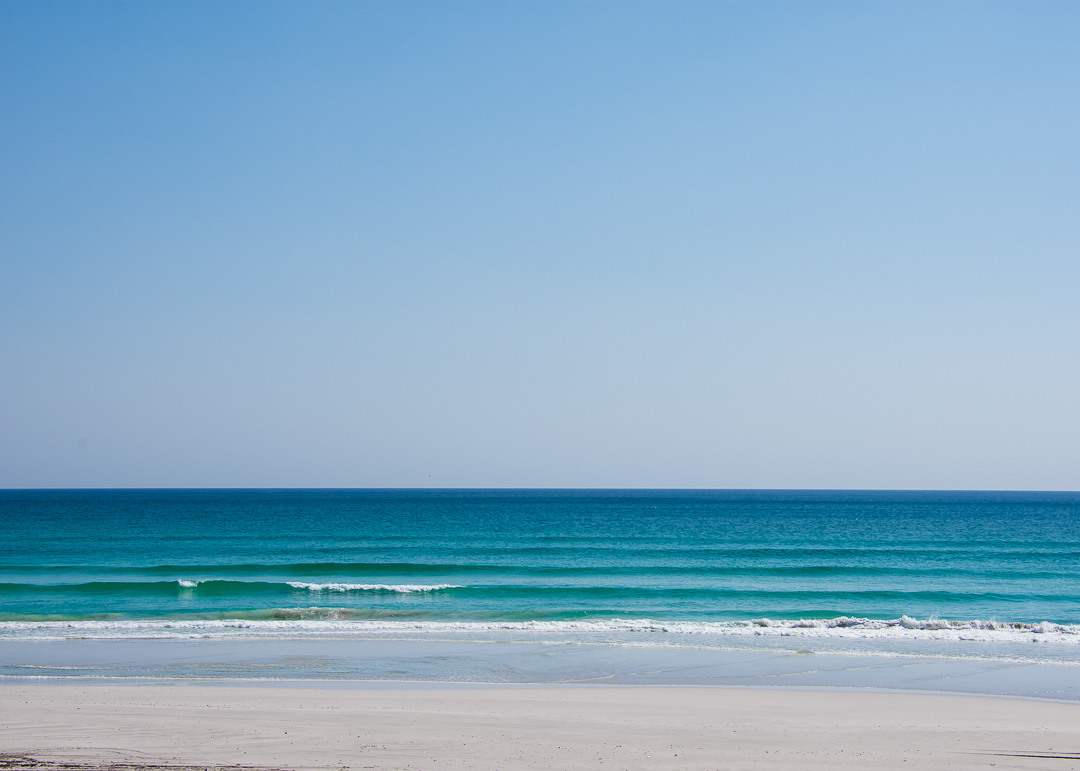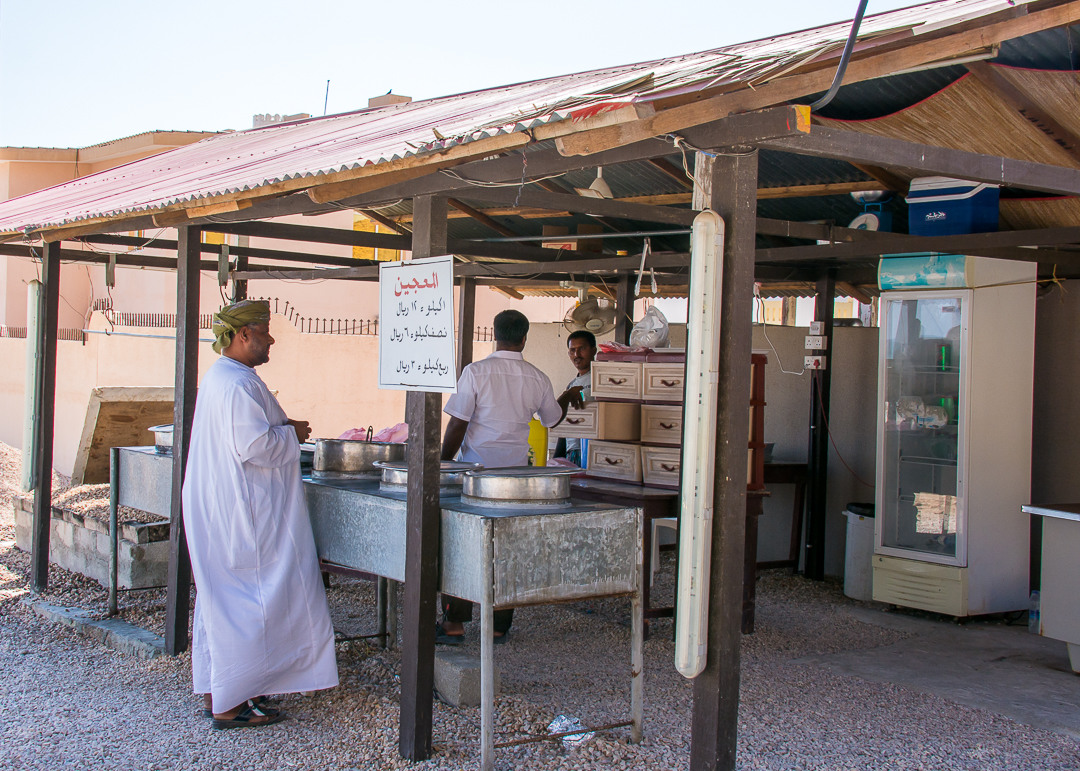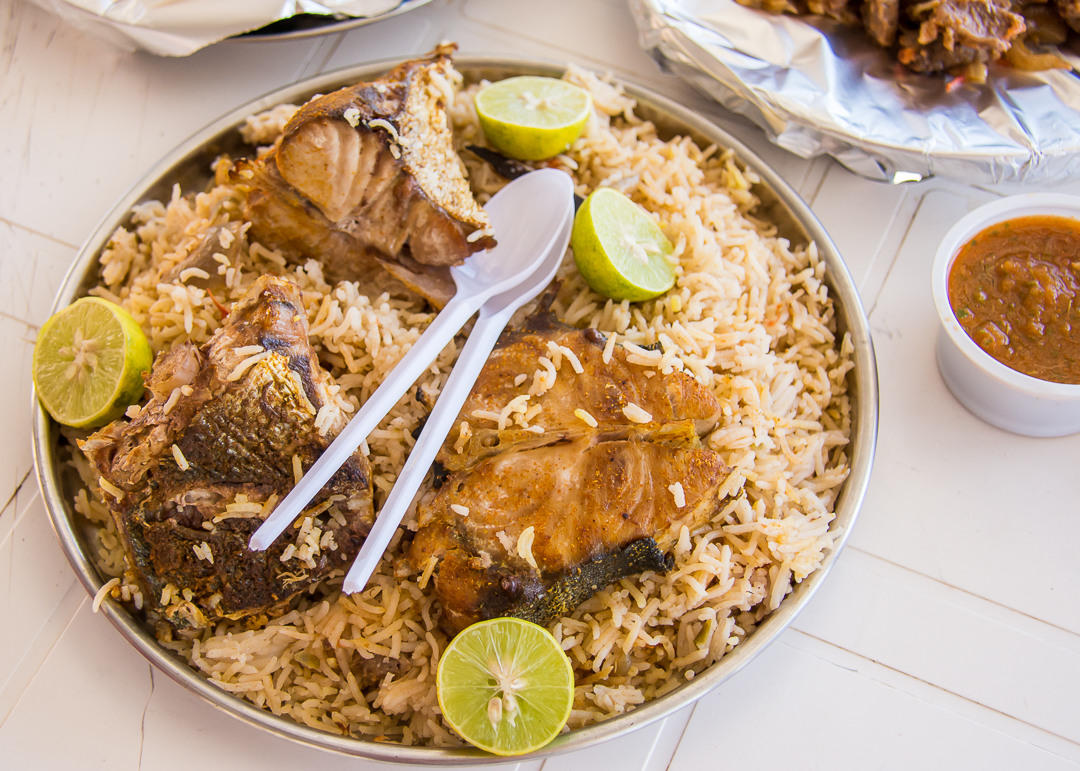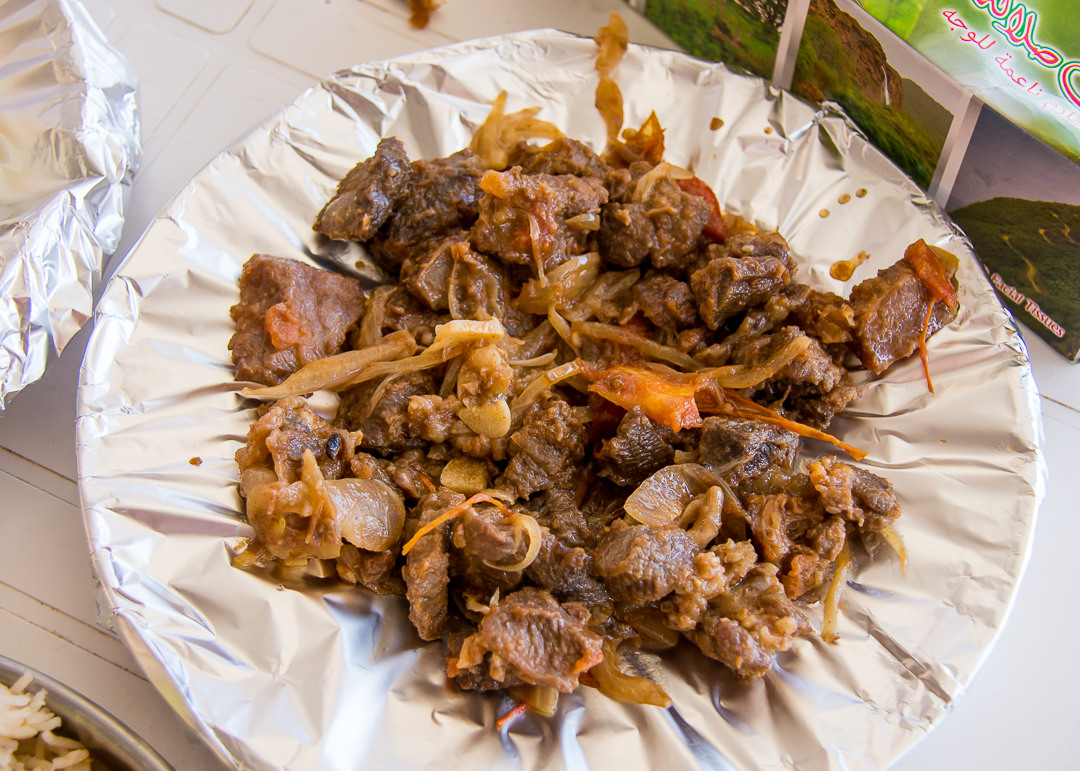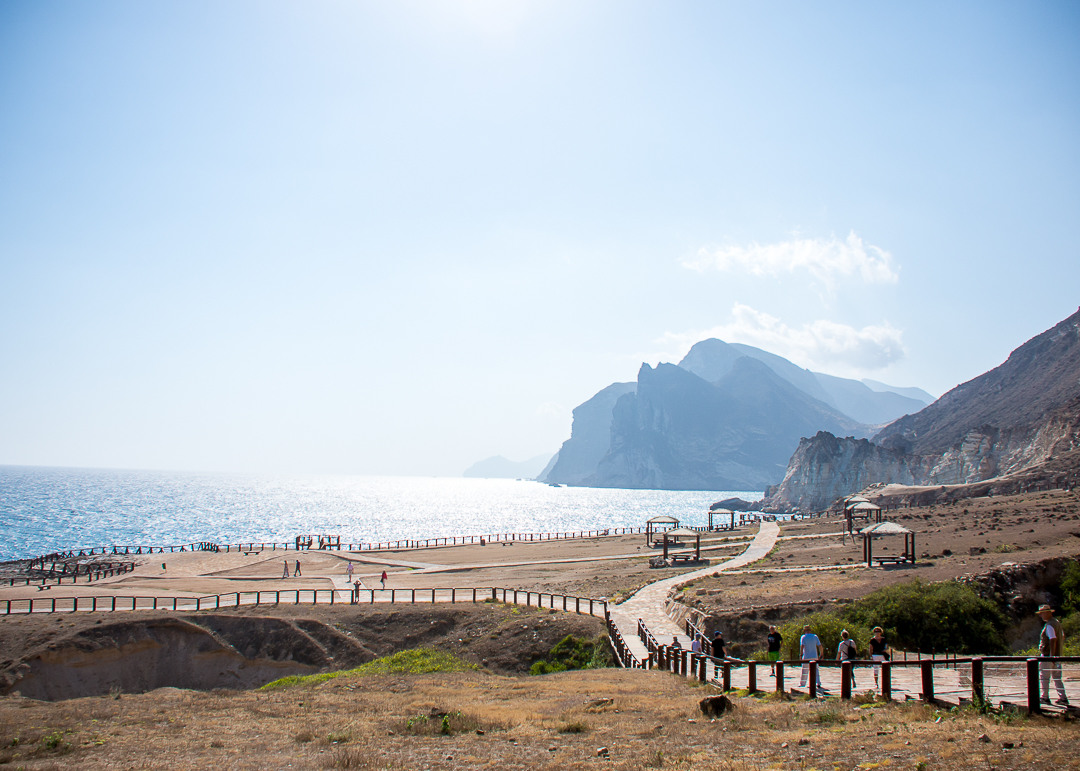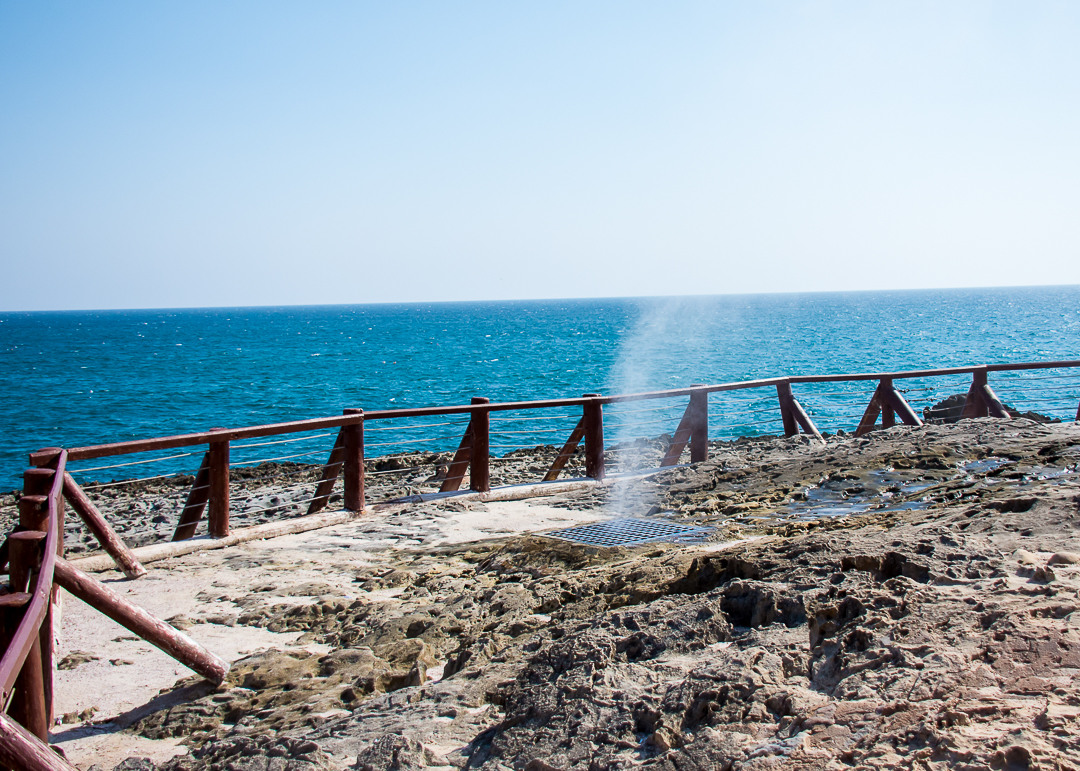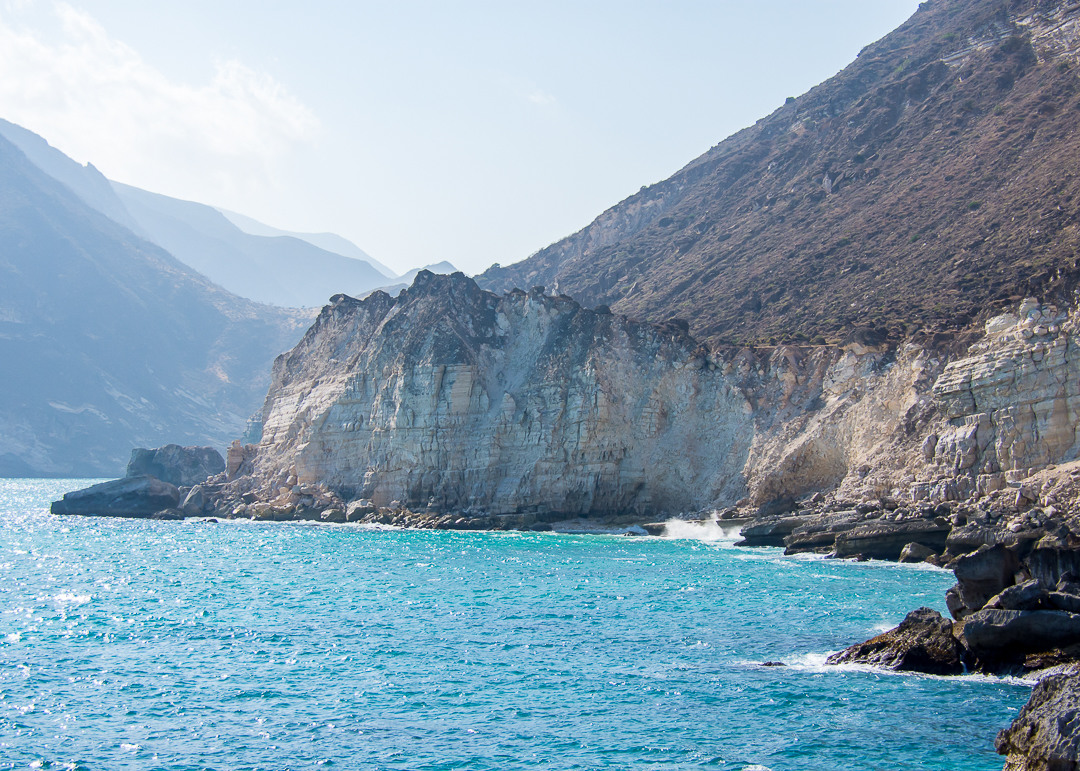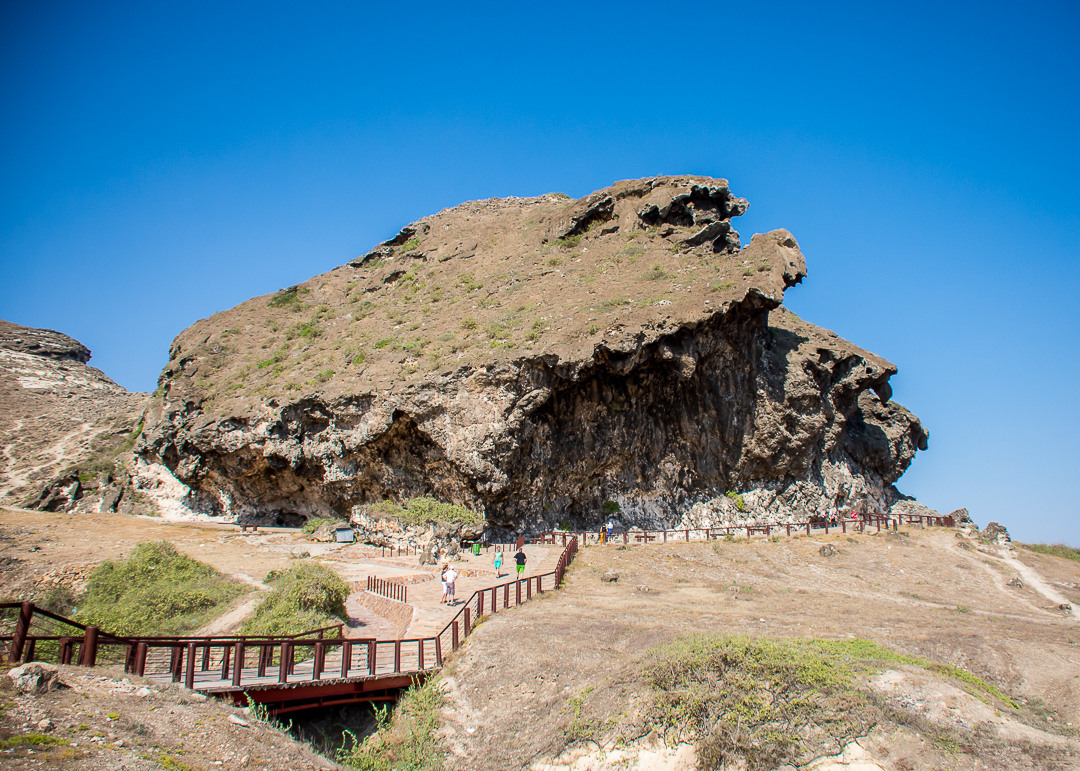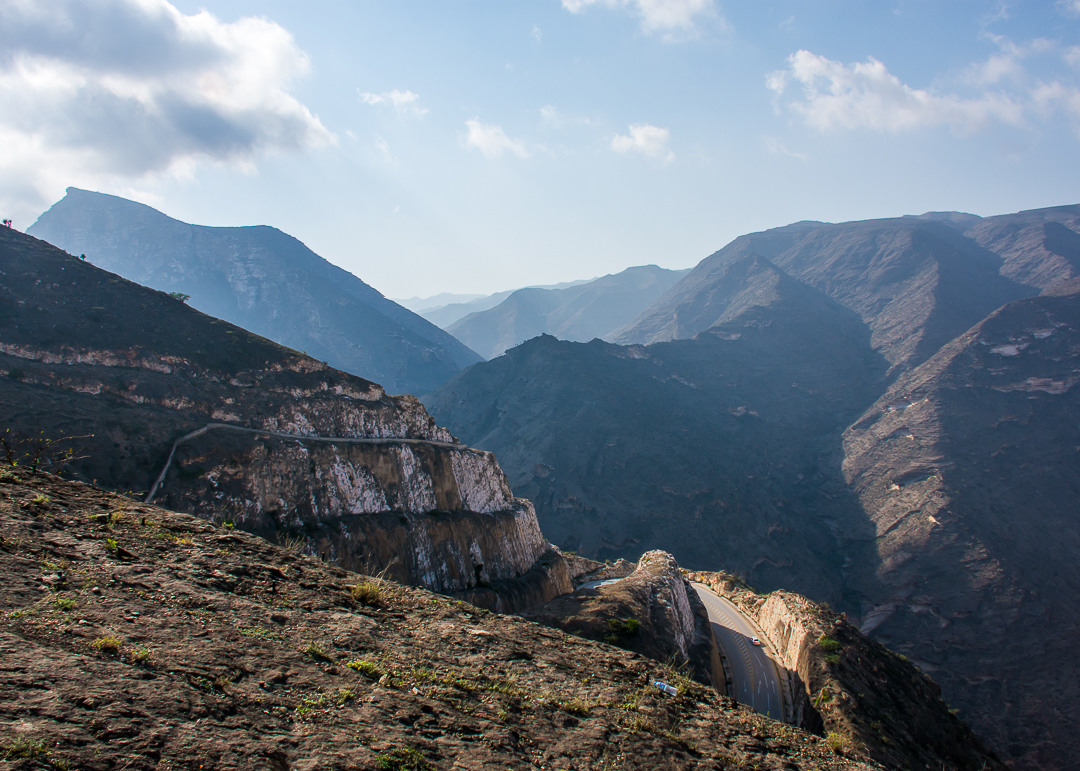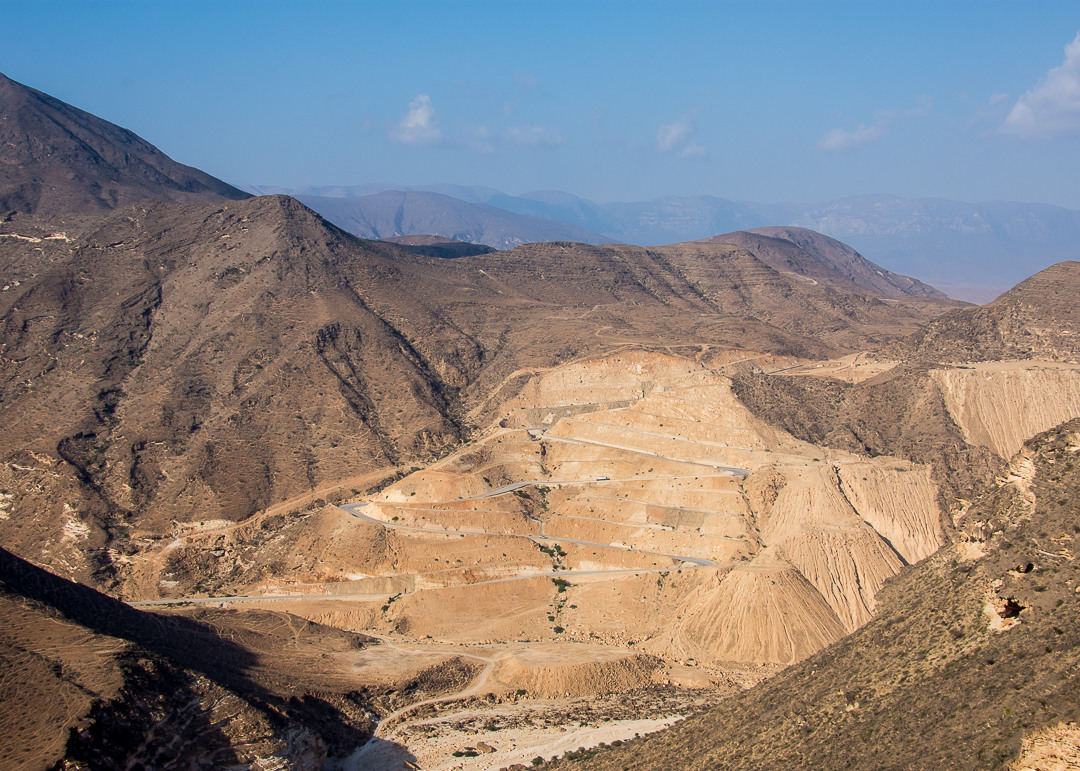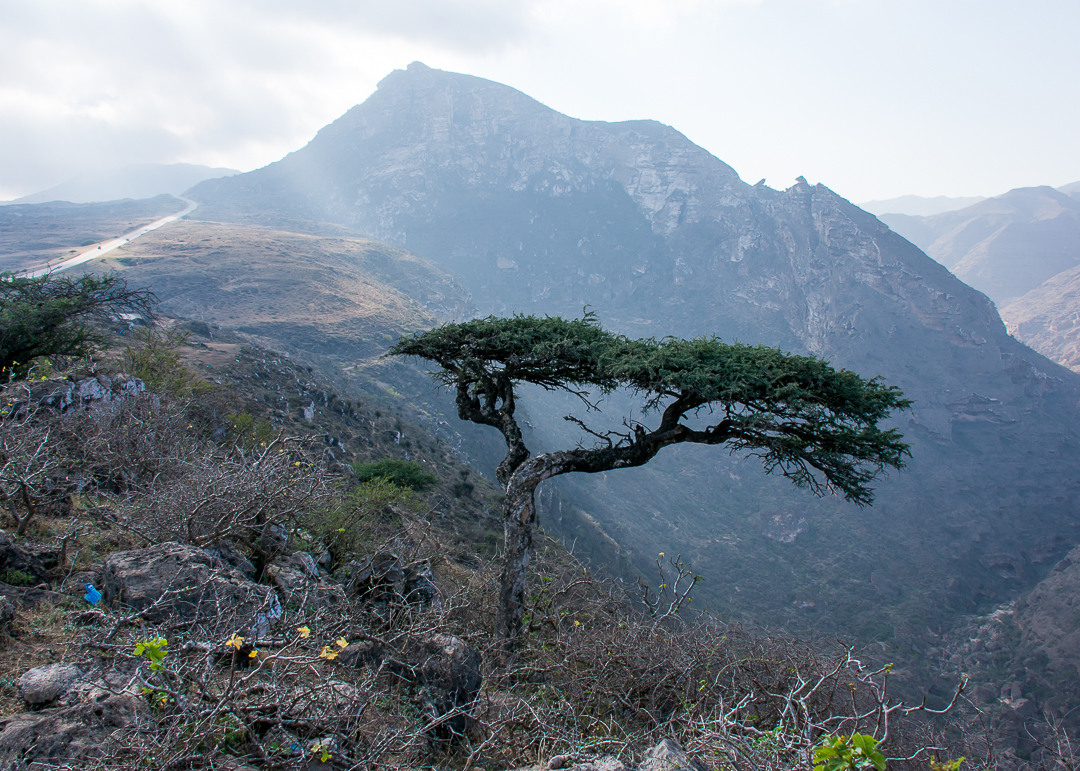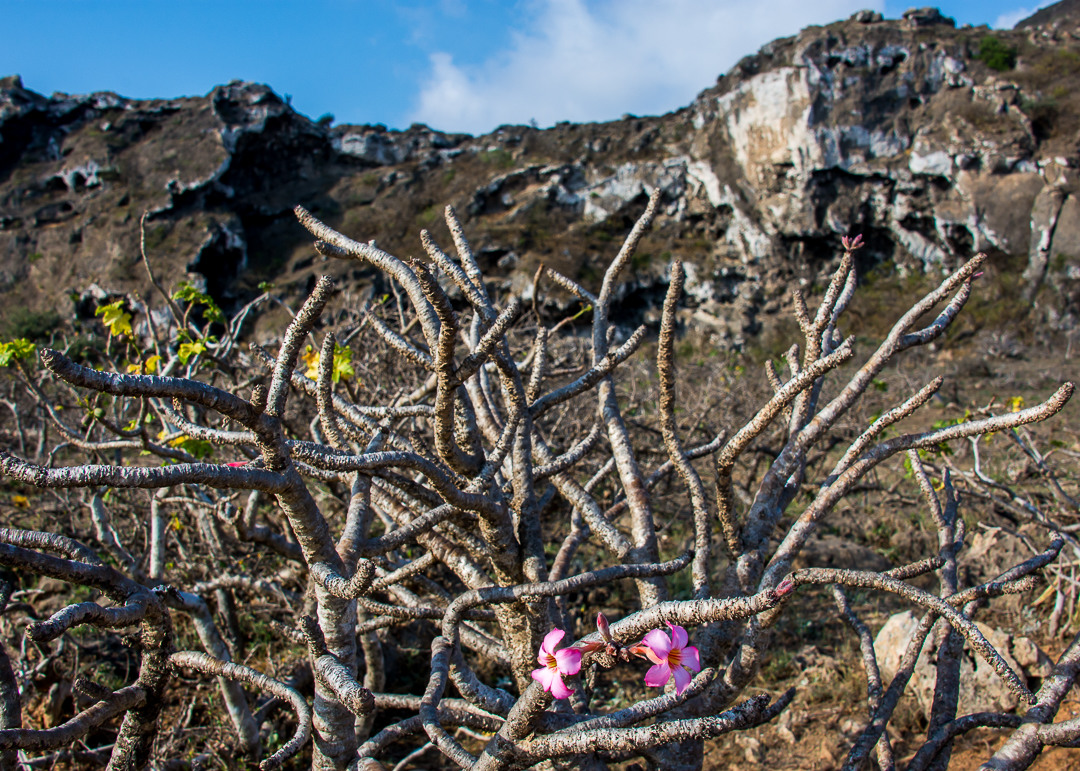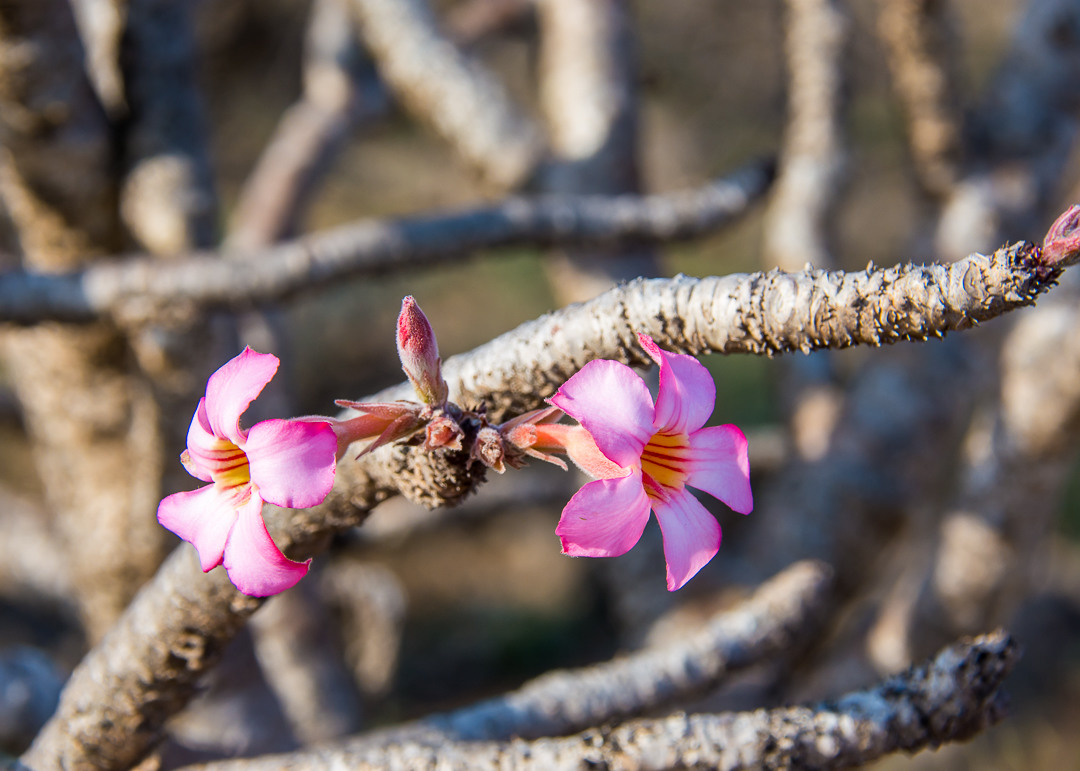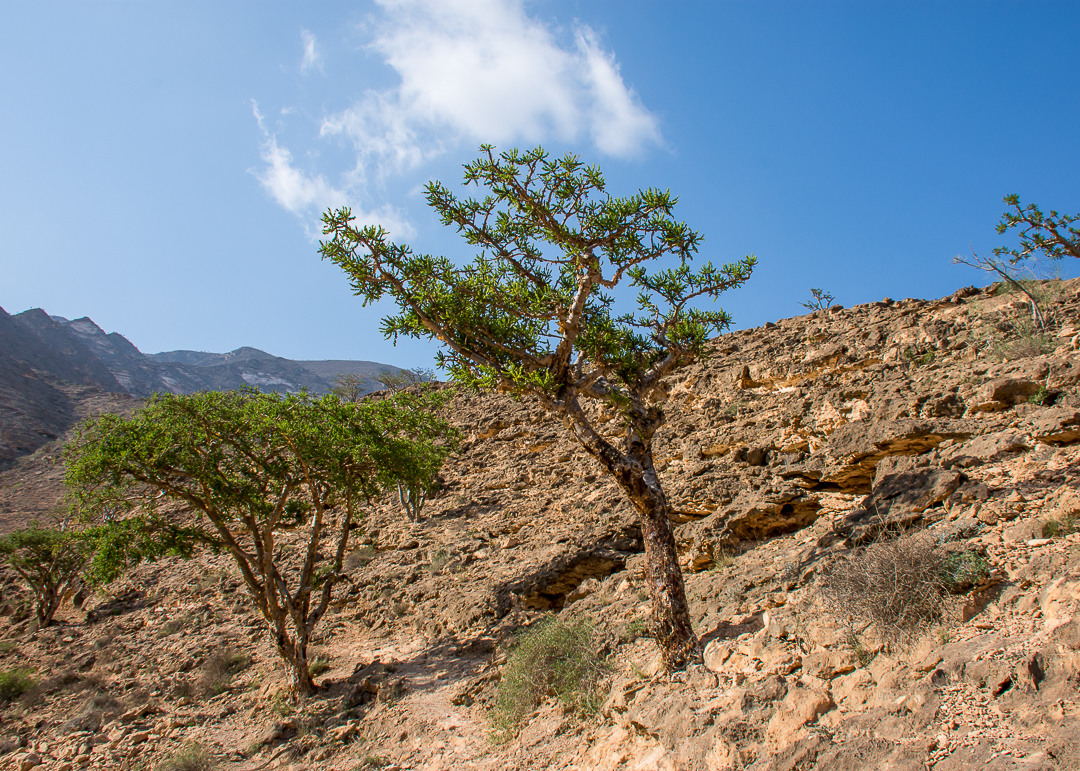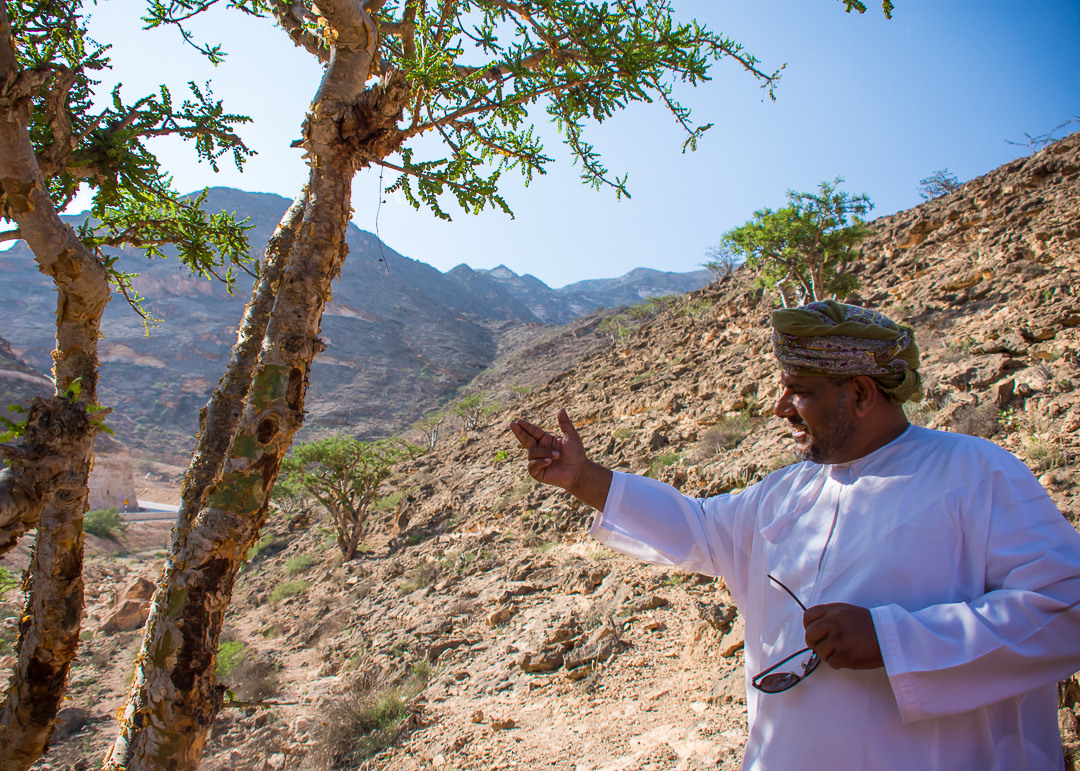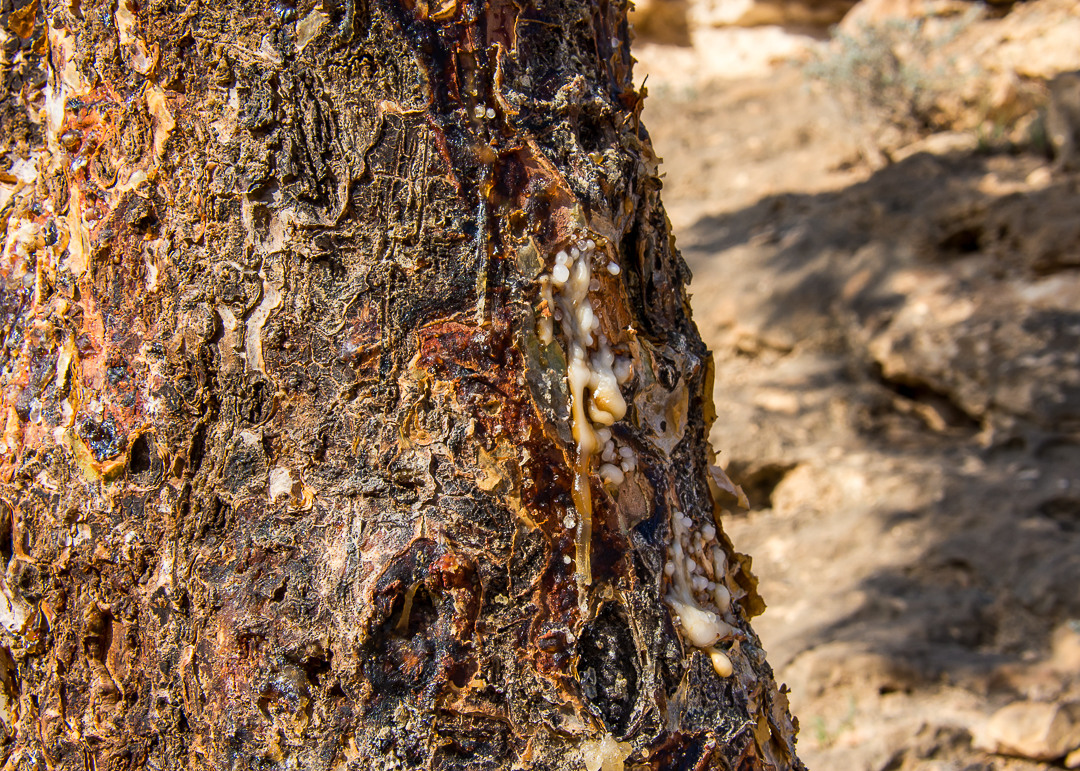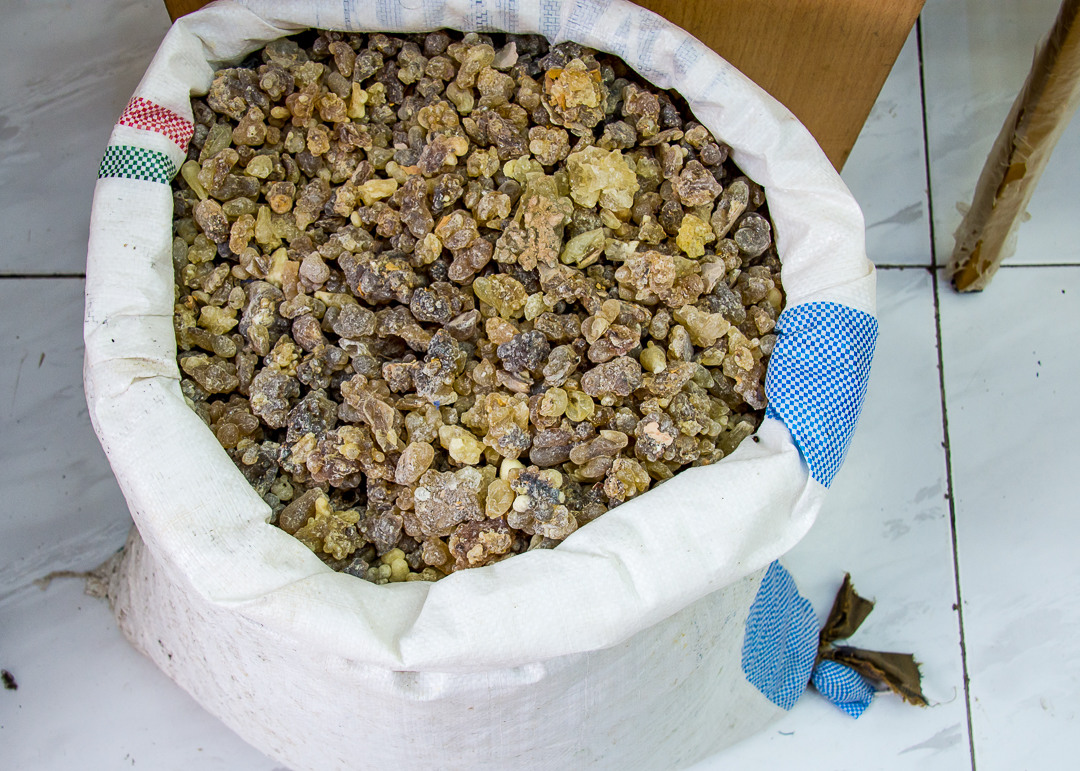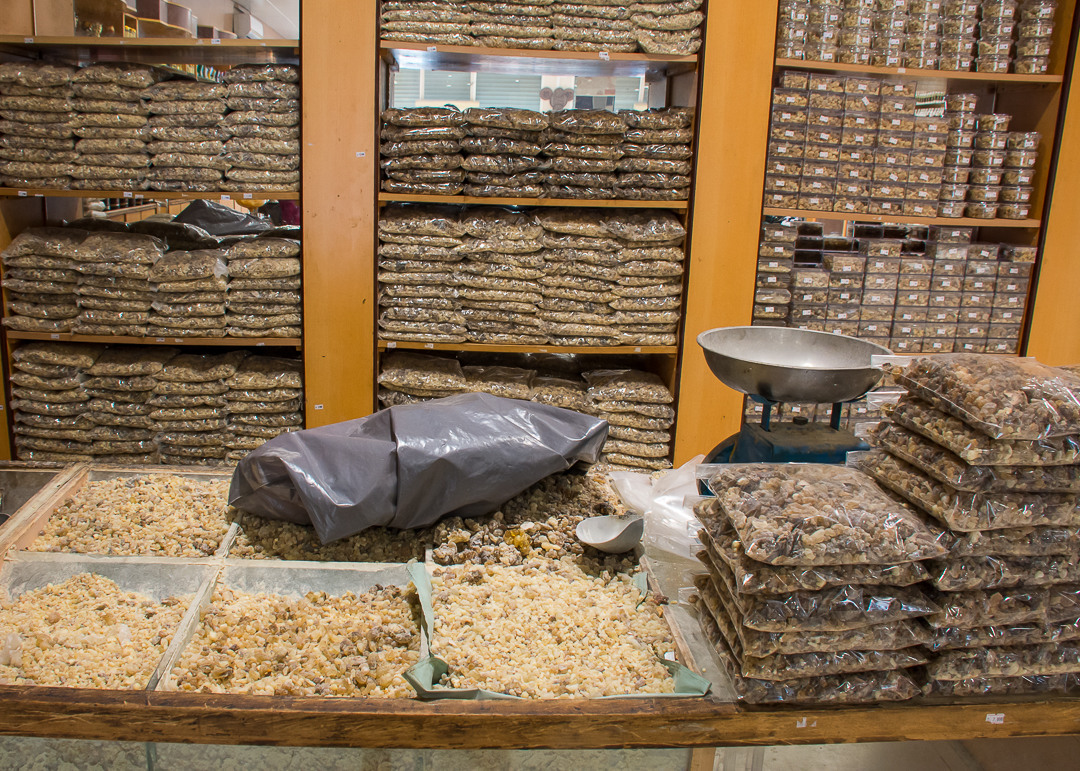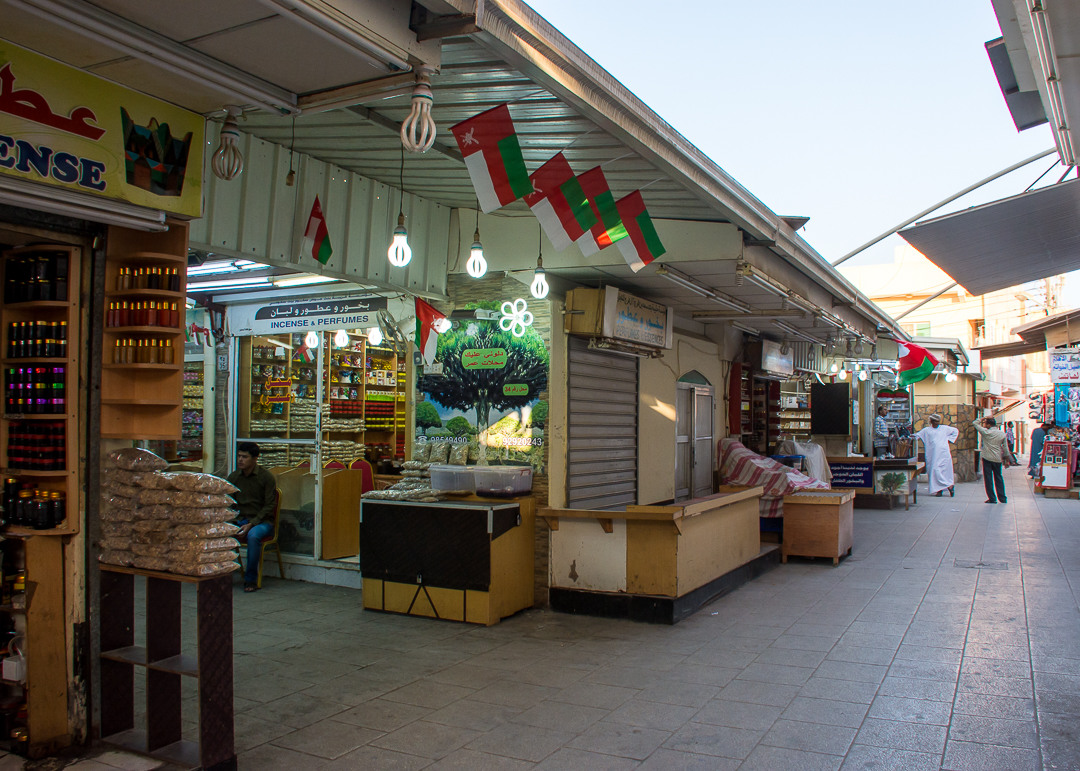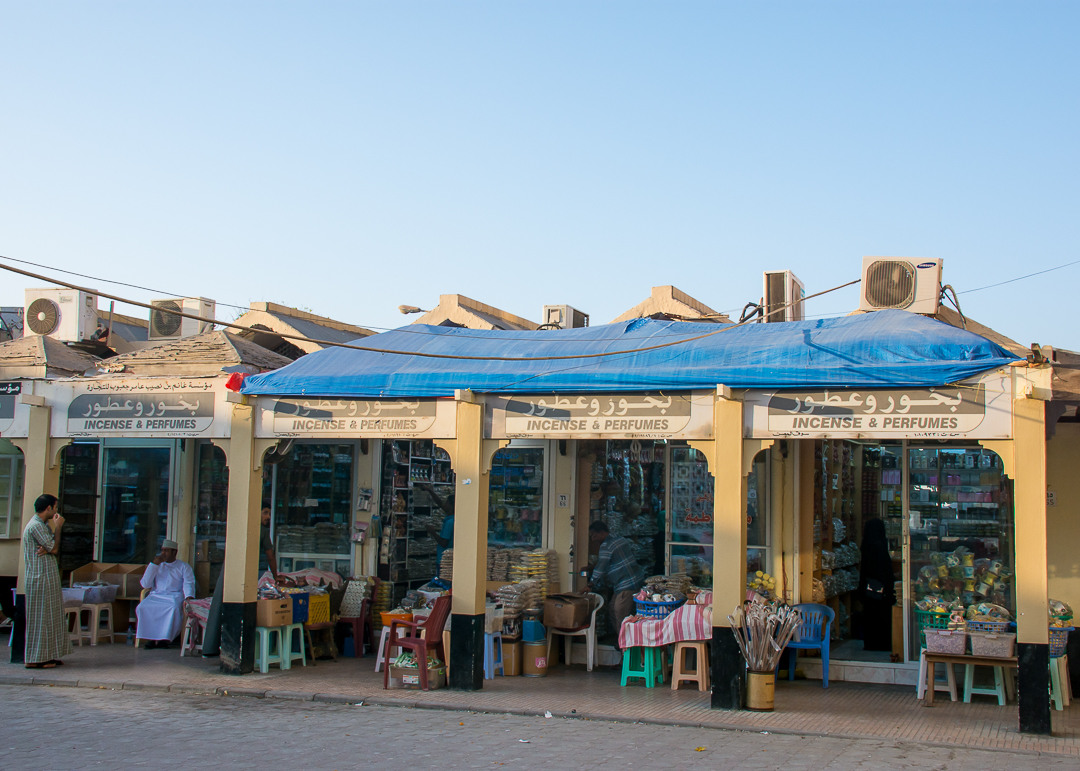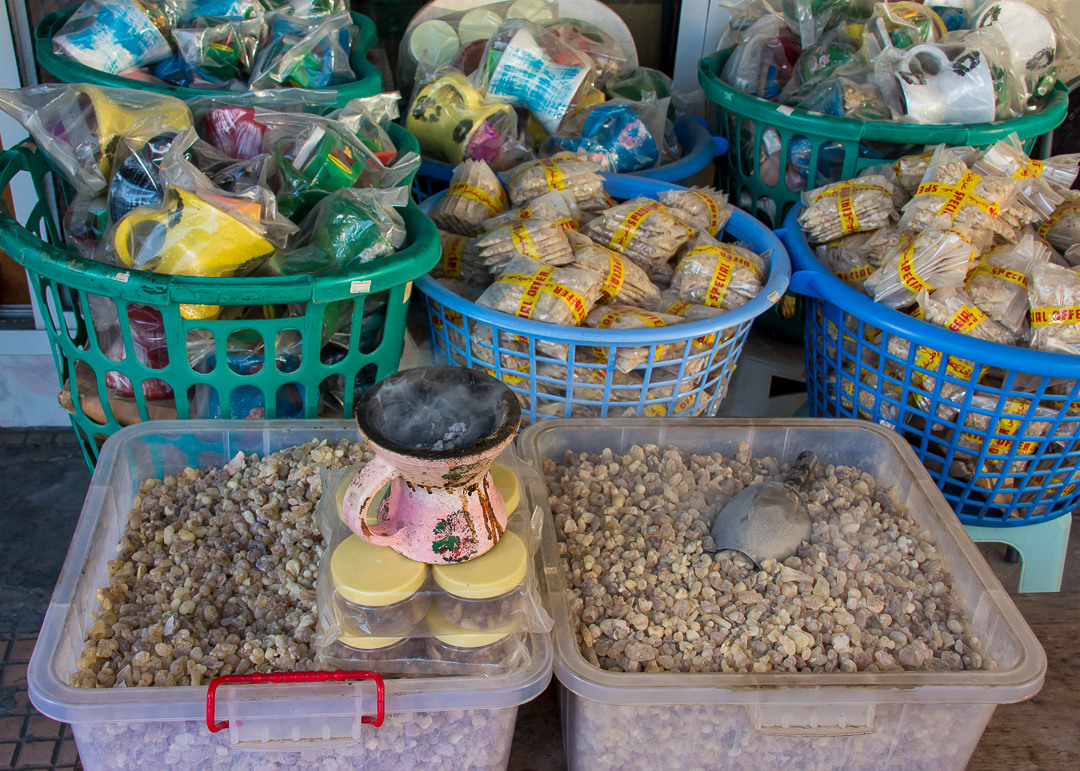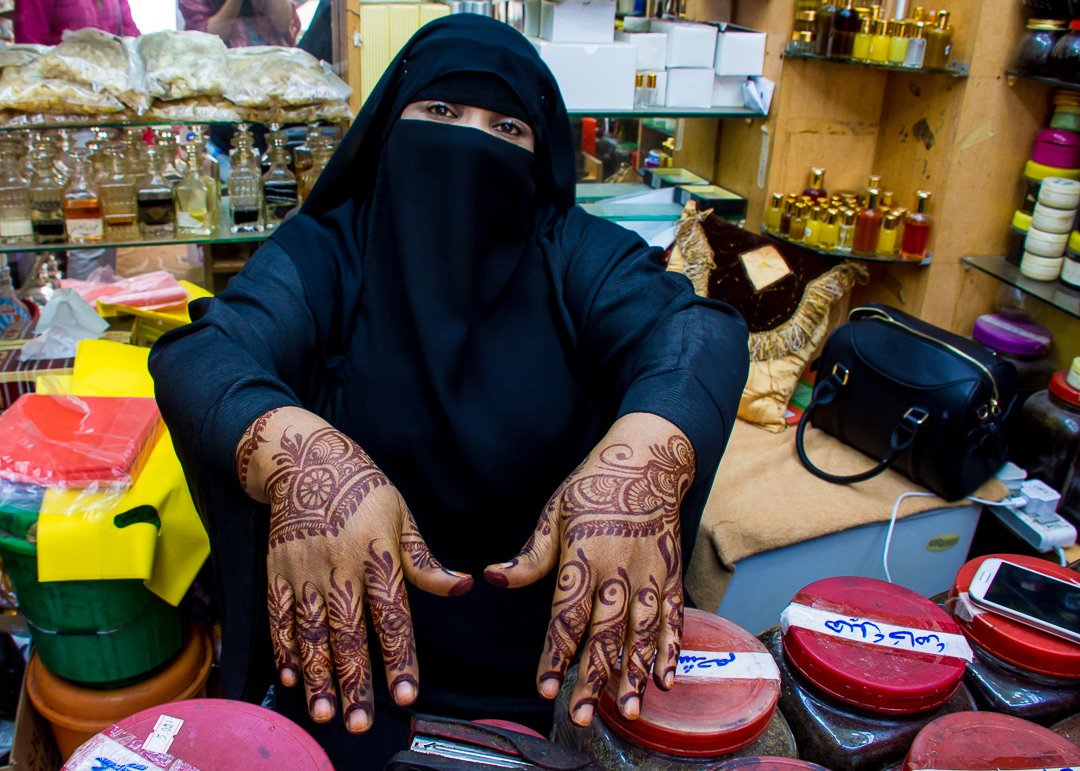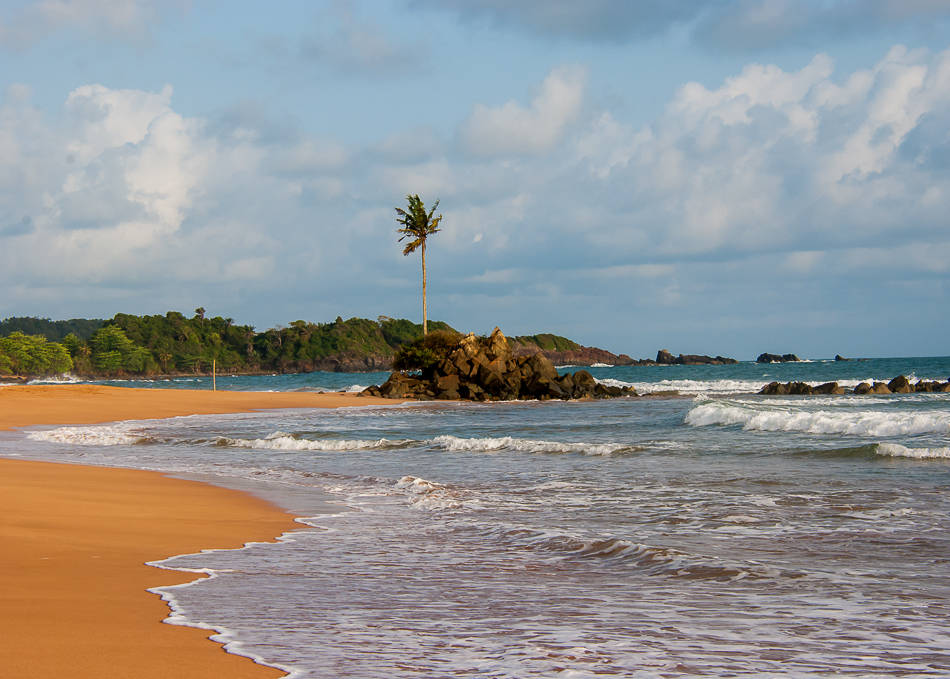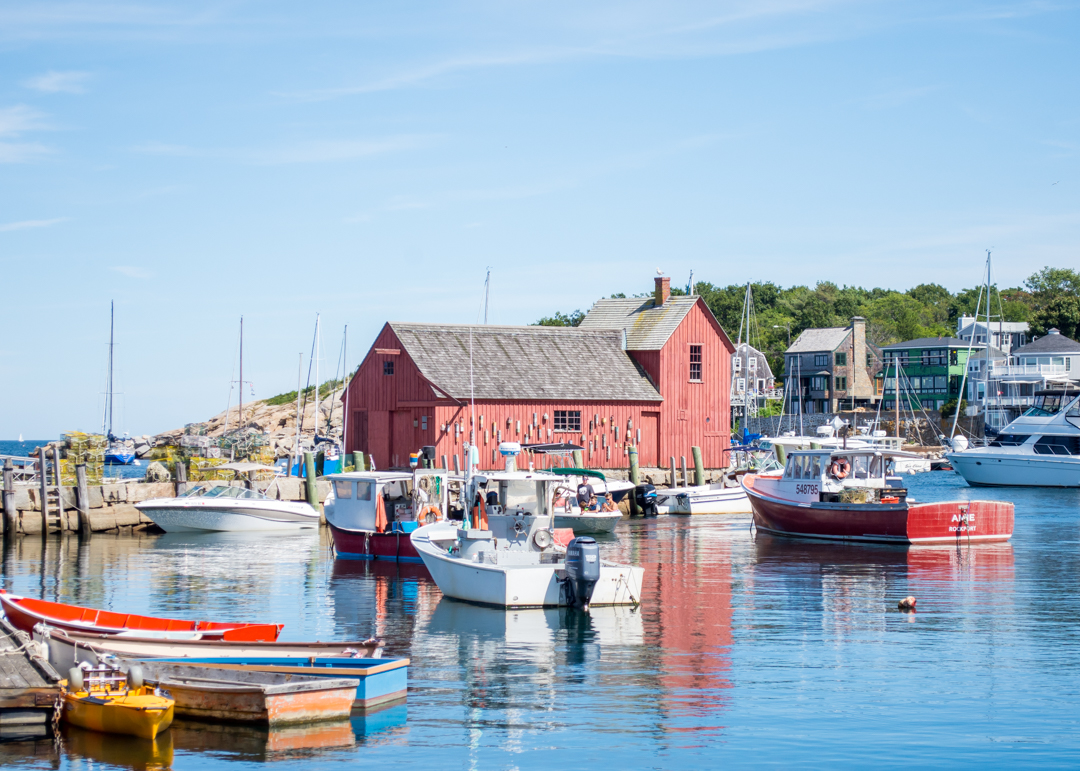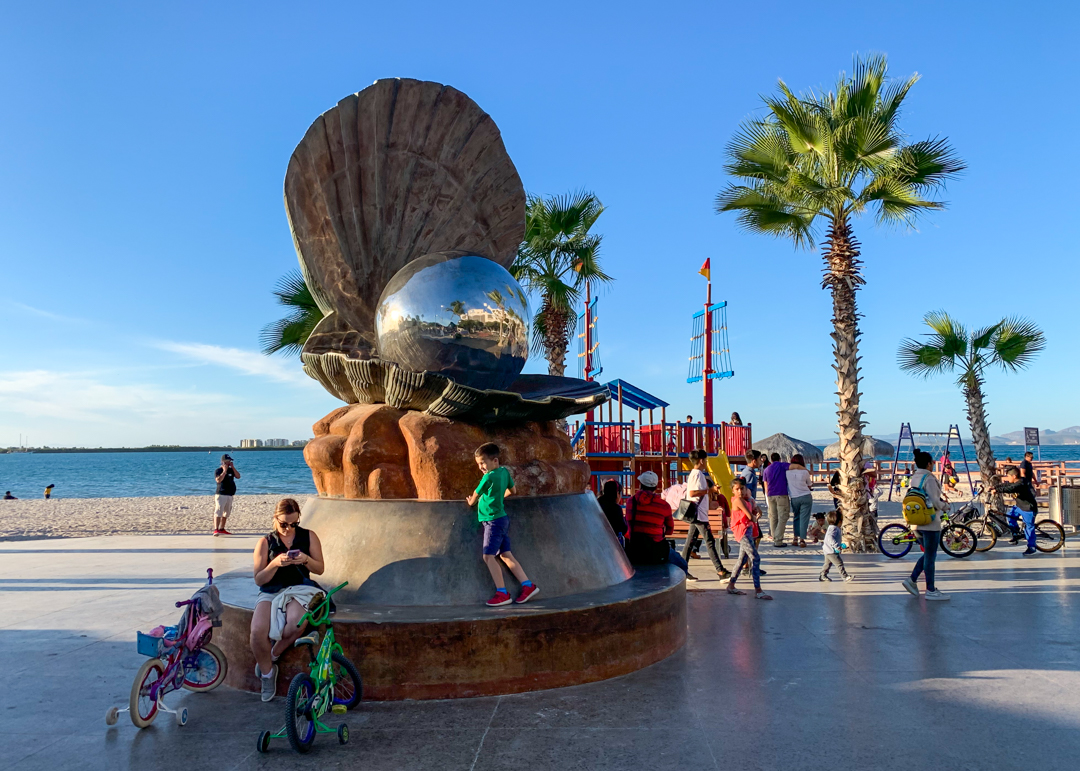We ended our trip to Oman in its southernmost province of Dhofar, a rugged and beautiful region that’s vastly different from the rest of the country. The mountain range that runs parallel to the coastline attracts the khareef (southwest monsoon) from the Indian Ocean from June to September, turning the whole land into a green paradise and attracting all the Northern Omanis who seek respite from the crippling summer heat in Muscat.
While we weren’t visiting during that peak period, the subtropical magic is clearly visible year-round as we drove from the airport to the hotel, passing lush banana plantations and stands selling coconuts, bananas and papayas on the side of the road.
You definitely don’t feel like you’re in Oman anymore and everywhere I looked reminded me much more of Africa with the swaying palm trees and superb beaches lining the coast, a definite flavor of Oman’s former territory of Zanzibar all around.
There is still of course the ubiquitous presence of the camels, found in even greater number here as they too must have been attracted by the cool mist of the monsoon.
In and around the main town of Salalah you’ll find resorts and hotels making the most of their beachfront location and beautiful climate like the Juweira Boutique Hotel where we stayed, boasting its own marina and private beach.
There’s plenty of attractive pools too to soak up every last bit of Omani sun and relax towards the end of your active holiday.
Onsite restaurants will fill you up with all the Arabic classics as well as unsurprisingly delicious locally caught seafood.
Time to get out of the resort and explore, first driving east with a grin on your face brought on by the unending gorgeous coast lined with lopsided coconut palm trees – they just never fail to deliver that instant vacation vibe, don’t they?! First thing you cross is the quaint fishing village of Taqah at the end of the pretty white sand beach that extends all the way from Salalah.
Inhabitants make their living from sardines which are abundant in these waters, especially in November, with huge banks traveling right off that beach. The fishermen will then dry them in the sun for a few days before selling them to farmers for animal feed.
There’s a small castle in the village well worth visiting which used to be the private residence of the tribal leader back in the 19th century.
Although not as old as other castles we visited in Oman, its compact size and furnished interior filled with exhibits was the most informative museum we had seen so far on the old Omani way of life.
The upper floor contains the watchtowers and the family quarters filled with personal objects, weapons and crafts of all kinds, with excellent signage illustrating their use back in the days.
Right behind the castle on the small hill sits the old fort guarding the town.
Although closed to the public, the fort offers great views over Taqah…
…but for an even better photo op, drive all the way to the top of the cliffs at the end of the beach for a gorgeous panorama of the coast, interior, and mountain range in the background – a true postcard of Dhofar.
A very different kind of palace awaits further along the coast as you get closer to the ruined ancient city of Sumharam, also known as the Queen of Sheba’s Palace.
The archaeological site is the only site in Dhofar dating back to before Christ and was in 1000BC the greatest city of Southeast Arabia. The remains of the town have been meticulously restored and you can clearly see old foundations of houses, temples and streets protected by thick walls.
The powerful port (the harbor mouth in front of you used to be open to the ocean) once controlled the frankincense trade route all the way to Jerusalem, Alexandria and even Rome, frankincense still being today the main trade commodity of Dhofar. From here, bags full of frankincense would go to India and China by boats or inland by camels.
The whole city was built out of well-crafted limestone blocks with some walls as thick as 3m.
Down below is the idyllic Khawr Rawri (or Khor Rori), a large creek which is now totally deserted but for the multitude of migratory seabirds, flamingos, herons, gulls, and cows who take delight in the fresh water. This would make for a terrific camping spot.
More road, more camels. They are definitely very comfortable and stress free surrounded by plenty of food and water and looking very much like they own the land.
Seriously, we have all day, don’t hurry up on our account…
A short drive will get you to a somewhat familiar sight – a wadi! This one though, Wadi Dirbat, is vastly different from the ones you’ve seen up north and is one of Dhofar’s lushest wadis, even so long after the monsoon. In the summer the place is a riot of water with lakes and waterfalls, and any time of the year it’s a beautiful spot for a picnic with plenty of shade and comfy spots to lay a blanket down.
You can follow the crystal clear water all the way to the entrance of a cave where you can see well preserved ancient rock paintings as well as plenty of stalagmites and stalactites.
Our tour of the east was over and we headed out west, passing Salalah and heading towards the Yemen border. The next landmark is Mughsail Beach, a magnificent 4km stretch of white sand beginning and ending with dramatic cliffs.
There are picnic shelters along the length and you’re likely to cross the common grazing camel and flamingos, the only other presence on the beach that day.
Make sure to stop at the local fish restaurant right on the beach for a scrumptious lunch.
Nothing beats some locally caught grilled fish, thick as a T-bone, with seasoned rice and spicy sauce.
You should also try the camel stew, a somewhat gamey taste but great texture and perfect for filling up those pita breads just brought warm to the table…
At the end of the beach you’ll find the Mughsail blowholes, not at their most impressive this time of year obviously since the water levels are down.
During the monsoon the water can apparently shoot up to 30m high through the rocks…think ours barely reached 1m…
Still it’s a great vista and allows you to hear the roar of the sea while possibly getting slightly soaked if you don’t time your camera moments right.
The imposing rocky outcrop at the entrance is actually a cave called Al Marnif.
Next you start the climb up the Dhofar mountains with hairpin bends winding their way up and down.
The mountain range’s most spectacular pass is the “Furious Road” which rises 400 metres in three miles through eight hairpin bends.
Once in the heights of Jebel Qamr, ‘the Mountains of the Moon’, you’ll have plenty of places to stop and admire the views.
The ground is teaming with wild flowers like these desert roses, bringing pops of beautiful color to the somewhat arid landscape.
On the way down you’ll get to see what the region is mainly known for and has been for thousands of years – the Frankincense trees. Frankincense was valued more than gold in ancient times and was considered Arabia’s most precious commodity for over 5,000 years, leading to the whole idea of international trade.
It all comes from the Boswellia tree bark and the specie that grows in the south of Oman is known to be the best of all.
How is frankincense produced you might ask? Simple: small incisions are cut into the bark to allow the milky sap to seep out and it will take between three to five days to dry into semi-opaque lumps which are then removed from the tree and transported to the market (or shipped overseas).
Salalah’s frankincense souk (Al Husn Souk) is the perfect place to end your trip surrounded by the nation’s gold and the familiar scent you would have noticed during your entire trip. Frankincense burns so well because of its natural oil content and is still used today across the country to fragrance rooms, clothing, etc. as well as being an essential part of weddings, births and Eid festivities.
The souk is dedicated to the sell of frankincense and other perfumes and is run by Omanis. Get lost in the aromatic alleyways and follow your nose to wherever it might lead you.
The traditional hand-painted pottery frankincense burner makes for an ideal souvenir and is a way for you to contribute to the Dhofari women’s income as they create the burners themselves.
Many of the stalls are run by veiled female traders, all incredibly jovial and ready to bargain, just bear in mind it’s harder to tell their bluff when you can only see their eyes… 😉 Spend as much time as you can here as intermingling with these lovely locals is a highlight of the trip and the region, Dhofari being especially known for their hospitality and warm nature. You’ll go back home with your head filled with images dating back thousands of years and your bag with a certain aromatic gum you knew nothing about despite it having ruled the world…

